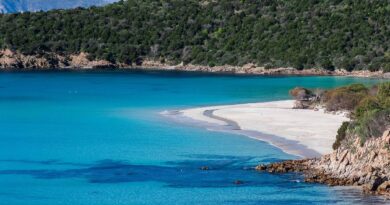Discovering Naples
HISTORY
Naples mirrors itself generously on its sea, always attentive to the vessels that may appear from that horizon still rich with the grandeur of European cultures.
The traveler is immediately dazzled by the spectacle of colors, by the intense aromas, and is also fascinated by the flow of life that joyfully courses through the alleyways. Naples has always unleashed unique charms: it is a strip of land suspended between water and fire, between heaven and hell.
The abstract forms of statues, the faded colors of ancient paintings, the intangible images of the past, soon vanish and disappear in the noisy and splendid spectacle of all the engaging forces of life.
The torrent of passions here is endless, walking in a whirlwind yet also elegant. Its narrow sidewalks teem with people from morning till night, happy simply to be alive.
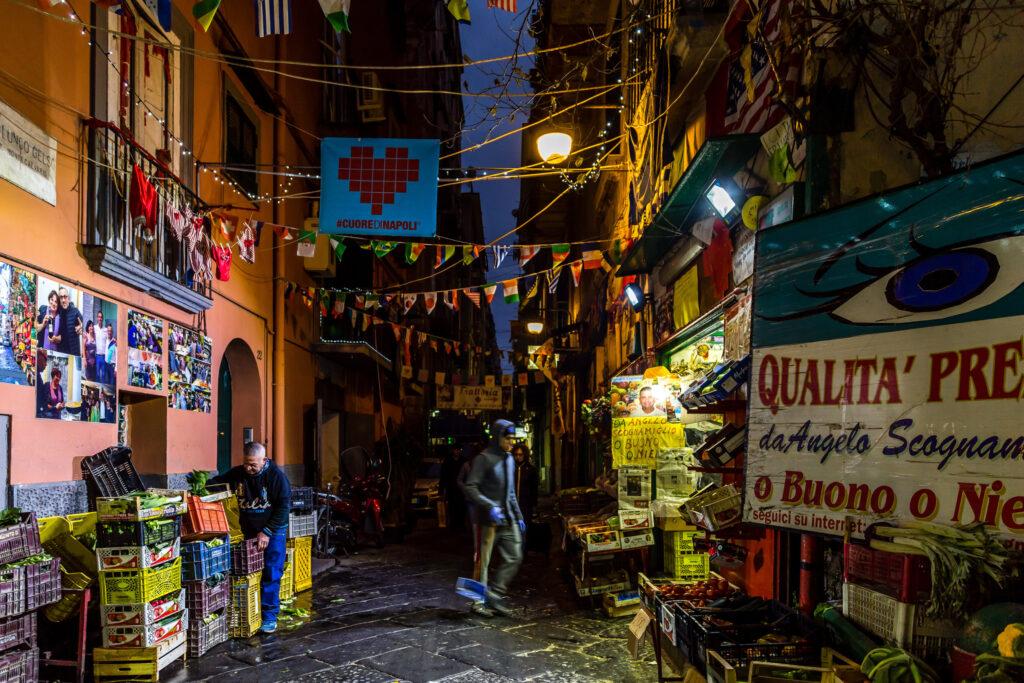
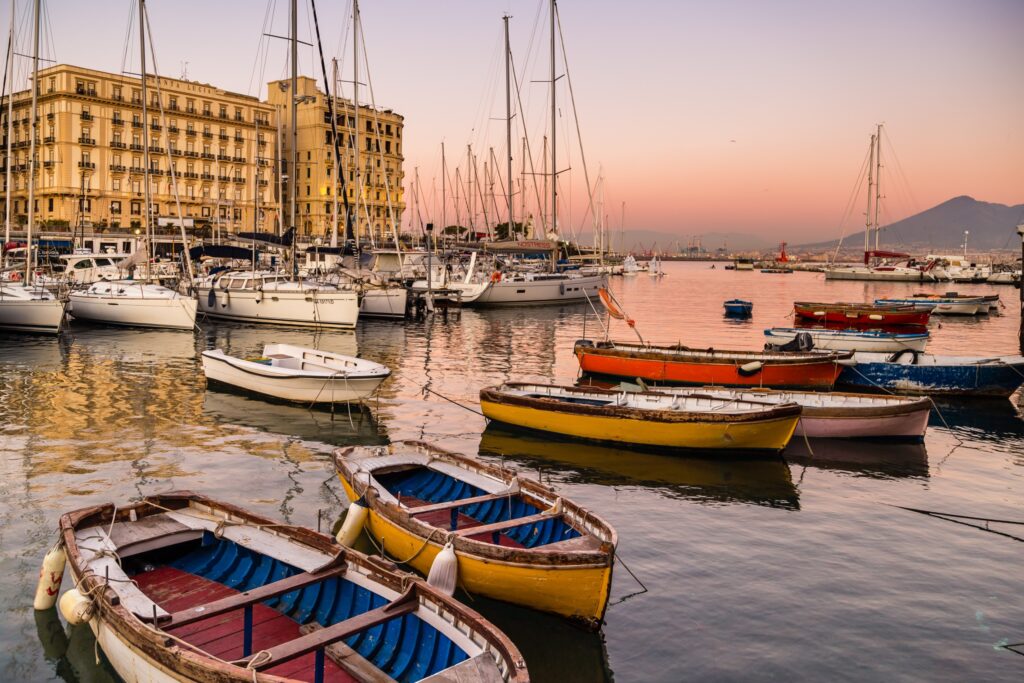
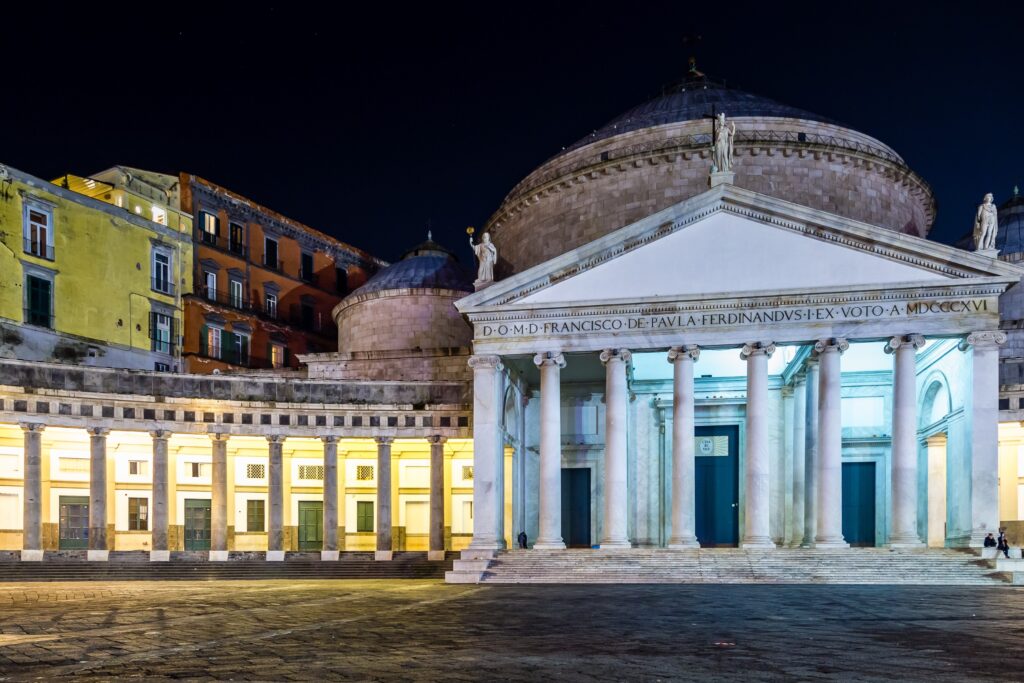
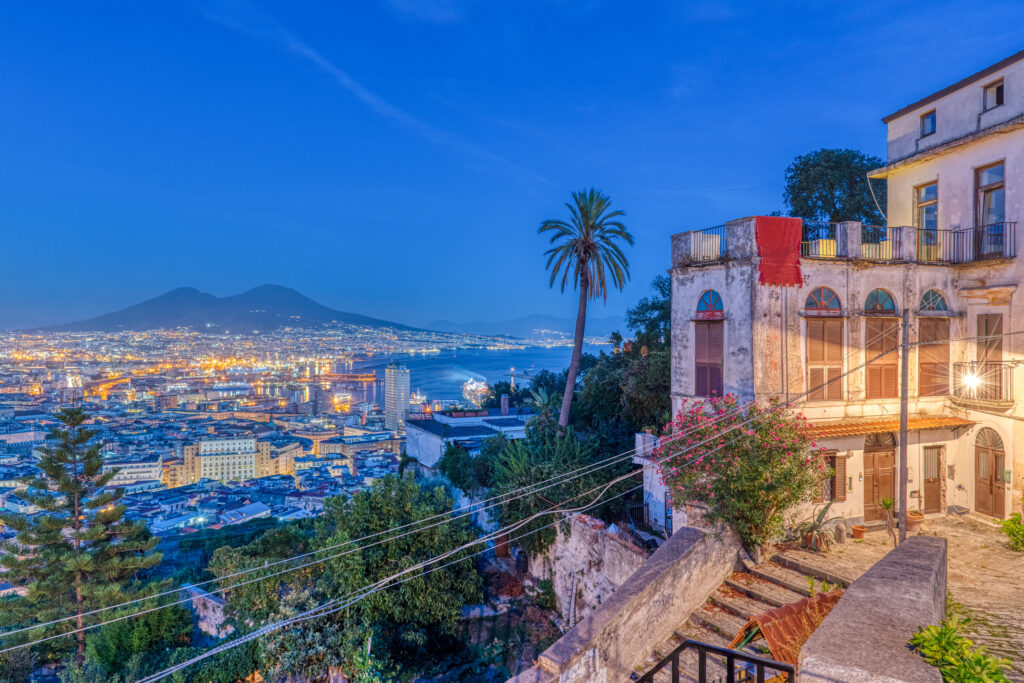
As Goethe wrote lovingly about Naples, “When I try to express myself in words, only images appear before my eyes: the beautiful landscape, the free sea, the sparkling islands, the roaring mountain.
I lack the ability to describe all this, and if it were not for these places where voices, notes, sounds, faces, and aromas come and go, awakening me from ecstasy, I would be a man without words.”
Here live people who love to crowd every crossroad, the mighty walls of Maschio Angioino and Castel dell’Ovo, or that promenade by day lit by the tireless and ever-plunging sun, and by night gleaming with lamplights and stars, gathered here more than elsewhere in the celestial vault as if paying reverence to Naples.
And at dawn? “Without delay, let us go, I want to see again that gulf resembling an ancient green-
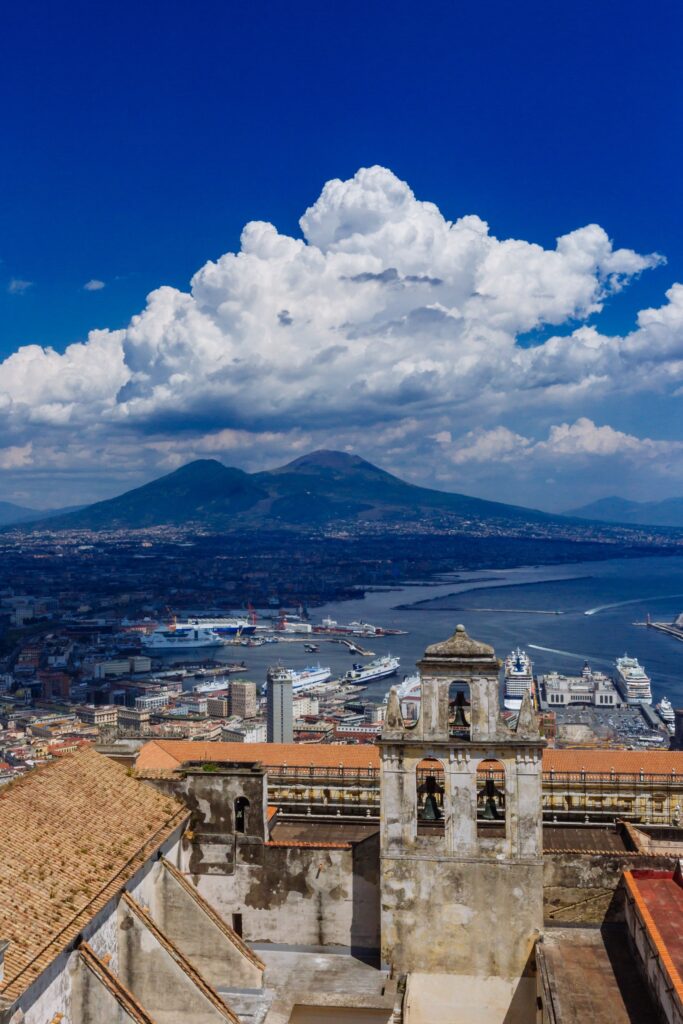
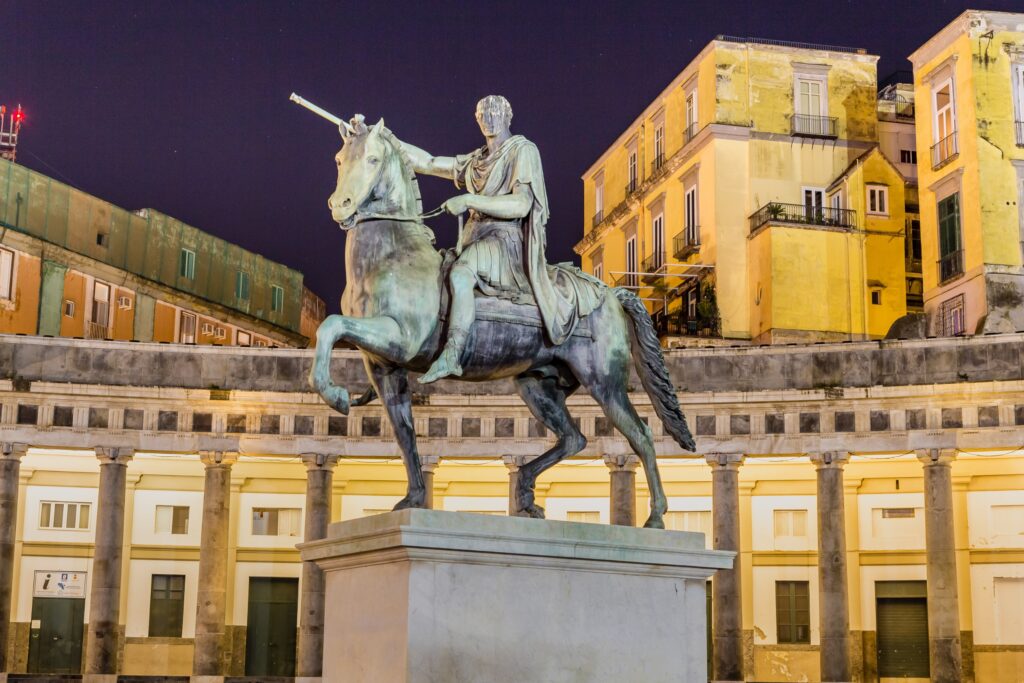
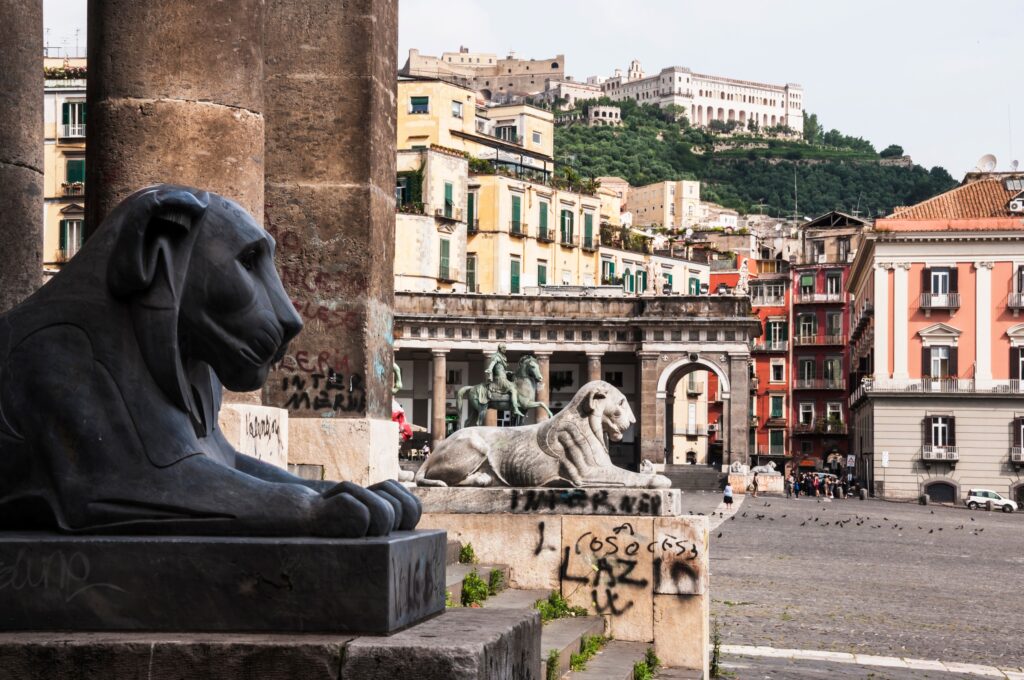
colored cup, frothing with foam in its coves and with coasts adorned with ivy garlands, surrounded as it is by hills, white houses, rocks covered with creeping vines.
Let us go, I want to see Vesuvius again, its fire rising from the waters, I want to gaze down from its summit; I want to descend like in a dream from these smiling hills, among orange trees, beneath the blossoming vine, where the murmurs of the wind and the waves reach us.”
And it is for this portrait rich in sweetness and admiration, passion and sentimentality, that a book from the nineteenth century could only conclude with a few verses to be whispered, illuminated by the moon, and with the delicate plucking of a violin as the sole soundtrack: “For its beauty and fertility, Naples deserves to be the beloved of the Gods.”
MISTERY
The Sanità District, located to the south of Capodimonte, is probably the neighborhood that best reflects the soul of the city and its inhabitants. It’s a neighborhood that’s hard to classify, where incredible Baroque palaces, bustling markets, and ancient catacombs can be found.
It’s right here that the great Totò was born (at 109 Via Santa Maria Antesaecula). Among the not-to-be-missed Baroque palaces are certainly the Palazzo dello Spagnuolo and the Palazzo Sanfelice.
The staircase that adorns the Palazzo dello Spagnuolo is truly a masterpiece, a double ramp that was also used by horses back in the day to carry the riders to the top. It was designed by Sanfelice in 1738 and has also become the setting for several films.
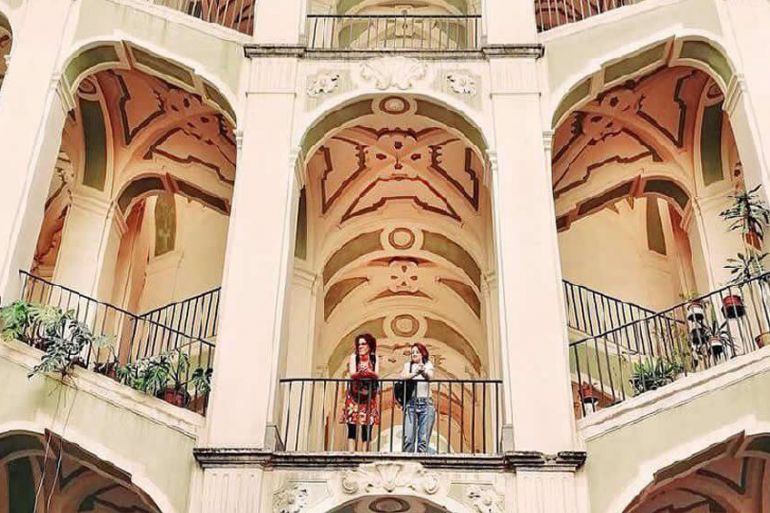
The Bourbon Gallery is an incredible architectural and engineering feat dating back to the mid-19th century.
Commissioned by Ferdinand II of Bourbon in 1853, it was meant to connect the Royal Palace to Victory Square, near the sea and the barracks. It was intended to serve as a swift military route and an escape route for the monarchs.
Villa Doria d’Angri is one of the most significant Italian neoclassical villas and is situated on a promontory of the Posillipo hill.
It was built in 1833 by the request of Prince Marcantonio Doria d’Angri, the last member of the family, as a leisure and prestige residence. The property extended along the ridge of the hill and reached the Mergellina beach with terraced vineyards and fruit trees (even today, it encompasses an 18,000 square meter park).
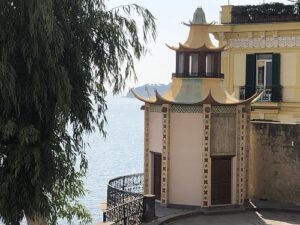
The interior spaces are adorned with Pompeian motifs, and all rooms are filled with mirrors, majolica tiles, and stucco work; the monumental structure also includes an exquisite octagonal Chinese pagoda. The view from its terraces and gardens is absolutely breathtaking.
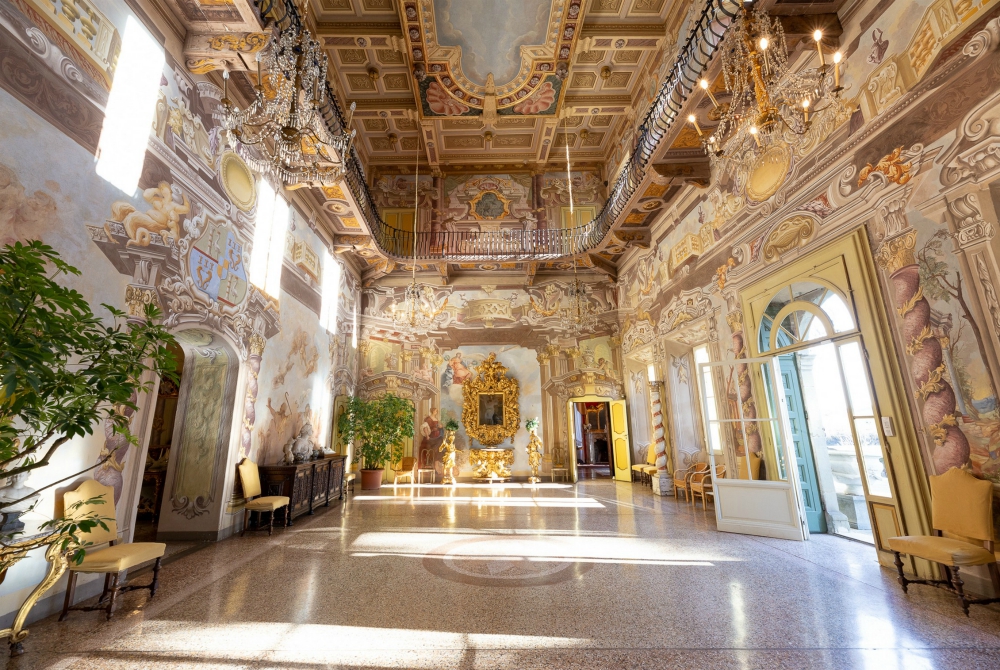
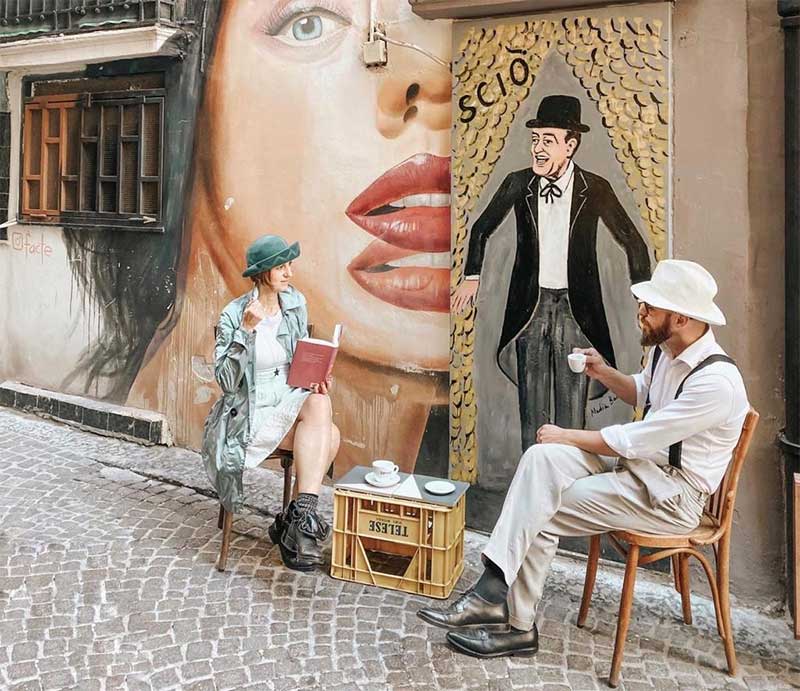

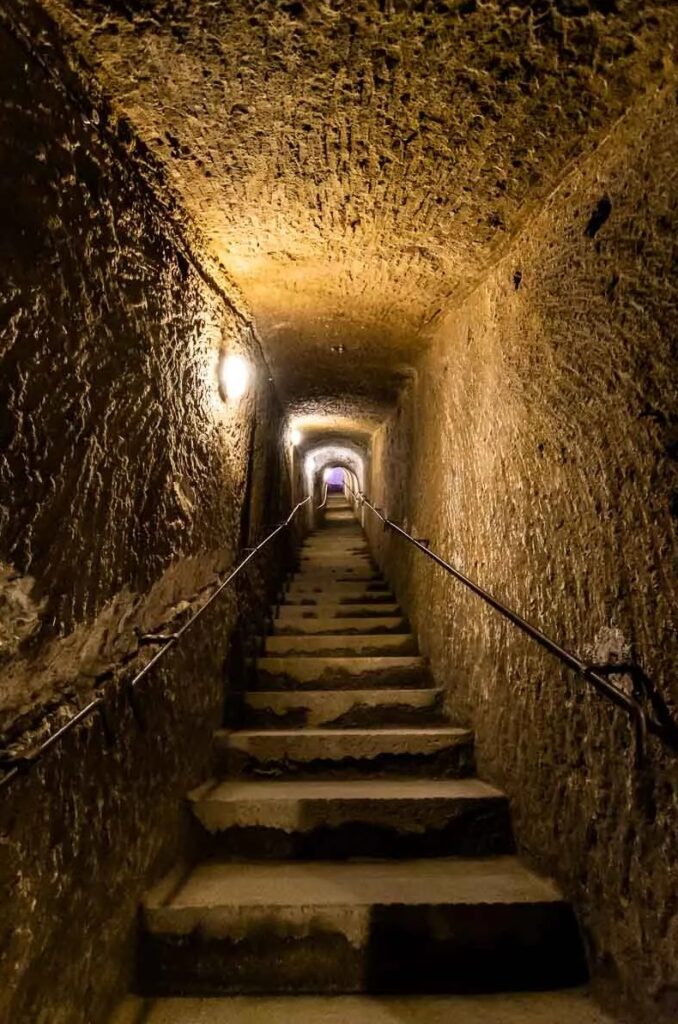
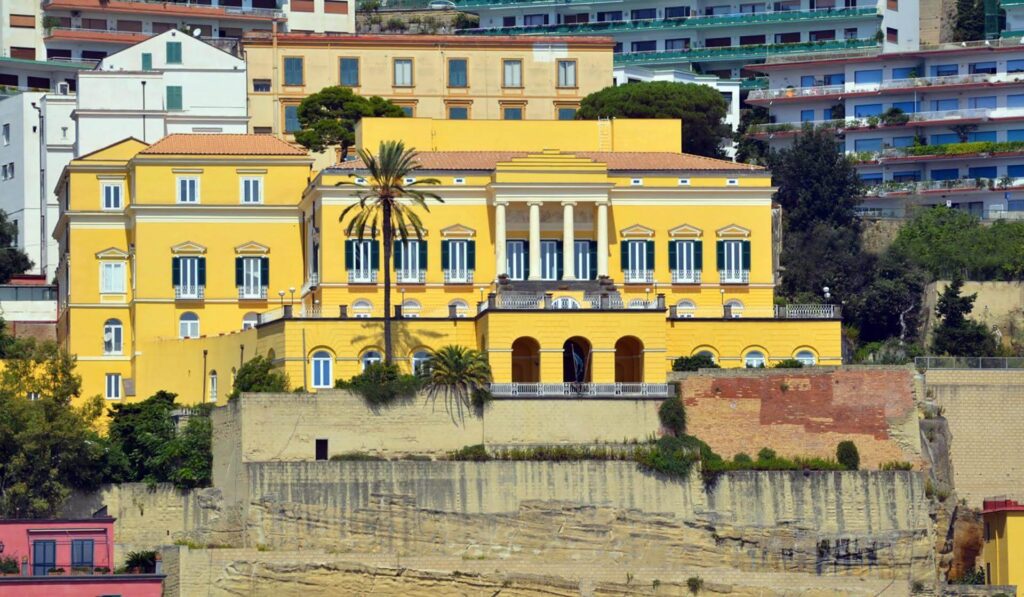
THE HIGH FASHION STREETS
The Vomero, a renowned hillside neighborhood, is one of the most elegant districts in the city: it indeed hosts upscale restaurants, tree-lined avenues, numerous Liberty-style villas, and breathtaking panoramic views. On Via Scarlatti, one can still come across ancient clothing stores that are part of the rich Neapolitan textile and tailoring tradition.
Via Luca Giordano, a road that intersects Via Scarlatti, is a long tree-lined boulevard filled with cafés where you can enjoy a good coffee seated at the bar’s tables. Here as well, there’s no shortage of opportunities for significant shopping.
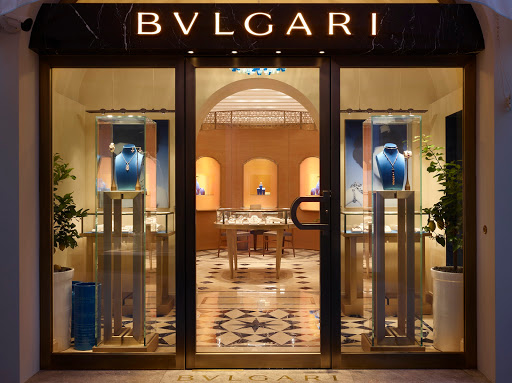
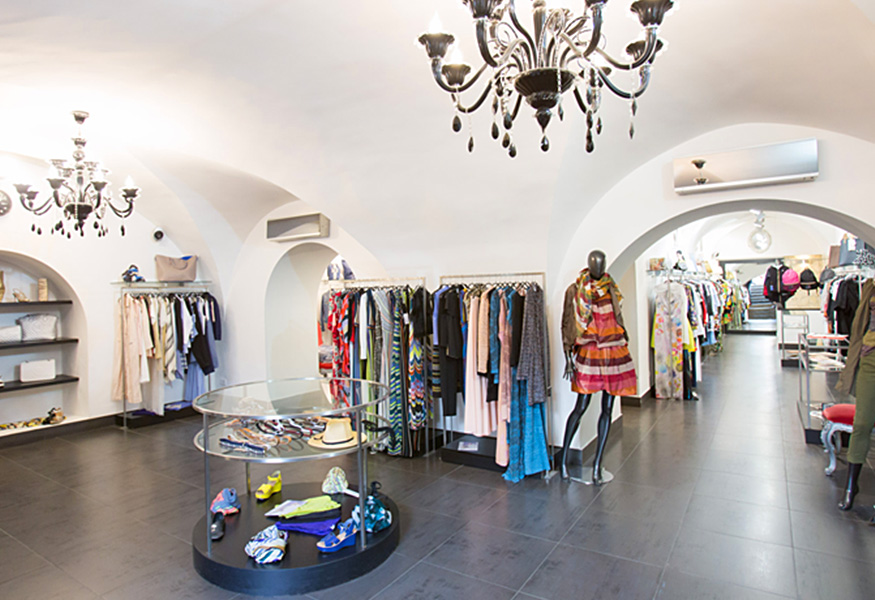


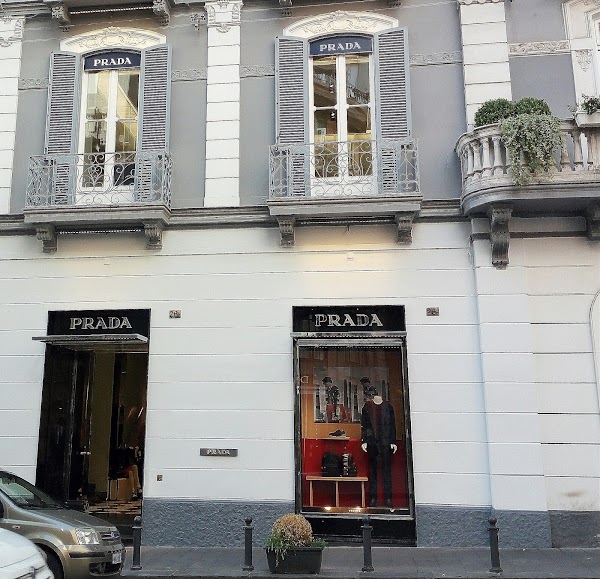

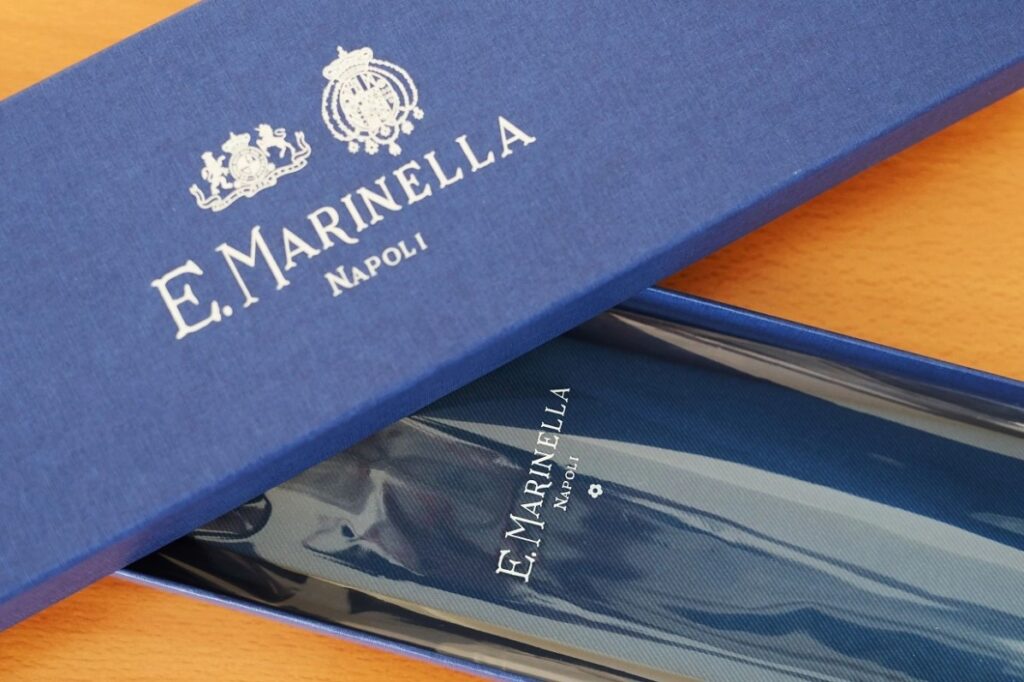
The Chiaia district is the heart of the city’s luxury lifestyle and hosts boutiques and high-fashion stores: Louis Vuitton, Prada, Hermès, Bulgari, and Damiani.
Via Calabritto is perhaps the most luxurious street in Naples, also in the Chiaia district, connecting Piazza dei Martiri with the Chiaia waterfront. On Via Calabritto, we find other major fashion houses: Tod’s, Bottega Veneta, Salvatore Ferragamo and Gucci.
A few steps away from Via Calabritto, on the Chiaia waterfront, there exists a true gem of Neapolitan tailoring, “E.Marinella,” an ancient shop of 20 square meters that has been crafting handmade ties with English silks exclusively designed for them for over a century. This shop is a symbol of Neapolitan elegance worldwide.
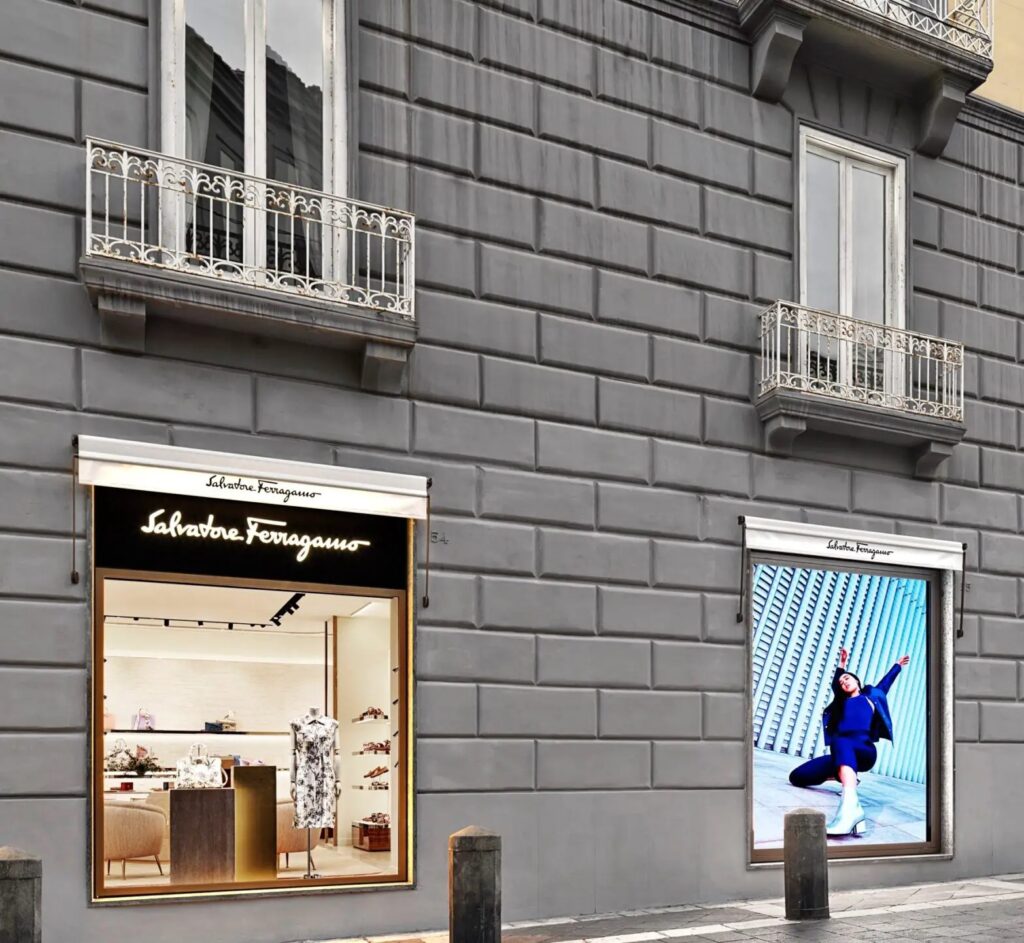
The atelier was founded in 1914, with the opening of a small boutique founded by Eugenio Marinella in the heart of Naples, today the brand has reached Tokyo, North America, Barcelona, Paris, the Far East.
Four generations that have literally made history, conquering a vast and elite clientele: Kennedy, Bill Clinton, King Juan Carlos, Prince Albert of Monaco and some members of the Agnelli house.
STARRED RESTAURANTS
TAVERNA ESTIA 2 STARS
BRISCIANO – NAPOLI
A son of the trade, chef Francesco Sposito grew up amidst the stoves of this restaurant, opened in 1999 by his father Armando, and later honed his technique and taste under the mentorship of Igles Corelli.
Today, alongside his brother Mario, he offers a menu that aims to showcase locally sourced ingredients and his gastronomic history, rooted in both the countryside and the coast.
This is how the menu offerings are divided, featuring both more traditional dishes (such as Tagliatelle with true squid and its ink) and more creative ones (such as a slice of wild-caught fish in a crust of dehydrated black olives, served on a buerre blanc sauce with seafood, Kumquat, and green chili puree), but always sounding like a declaration of love for Campania.
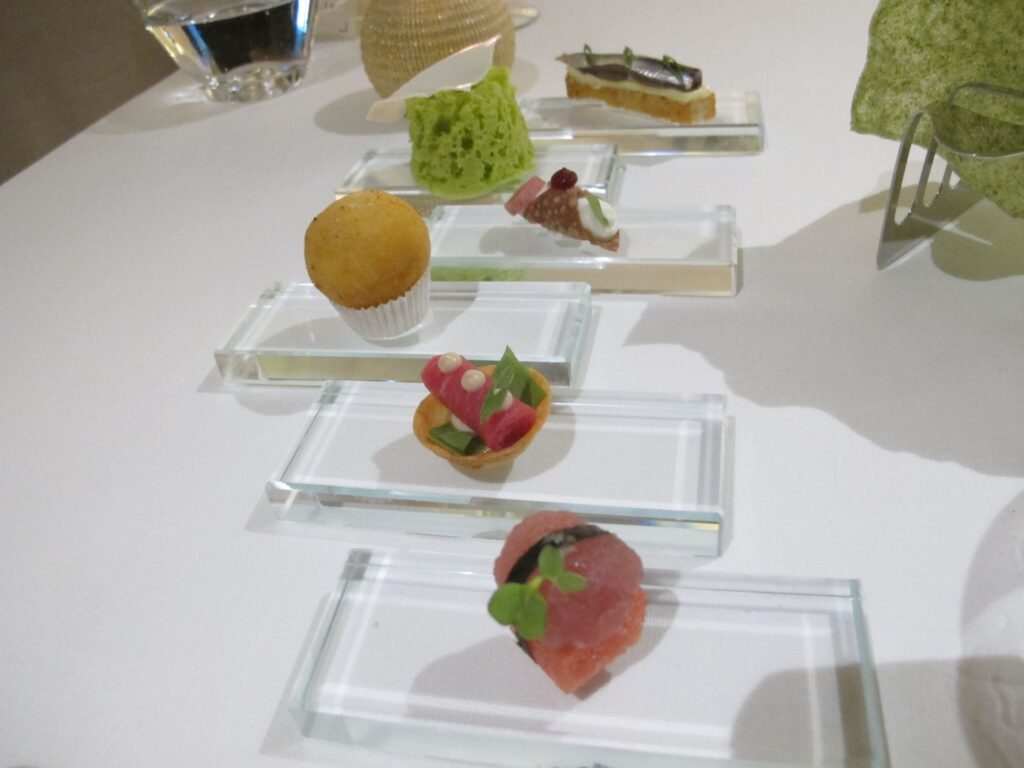

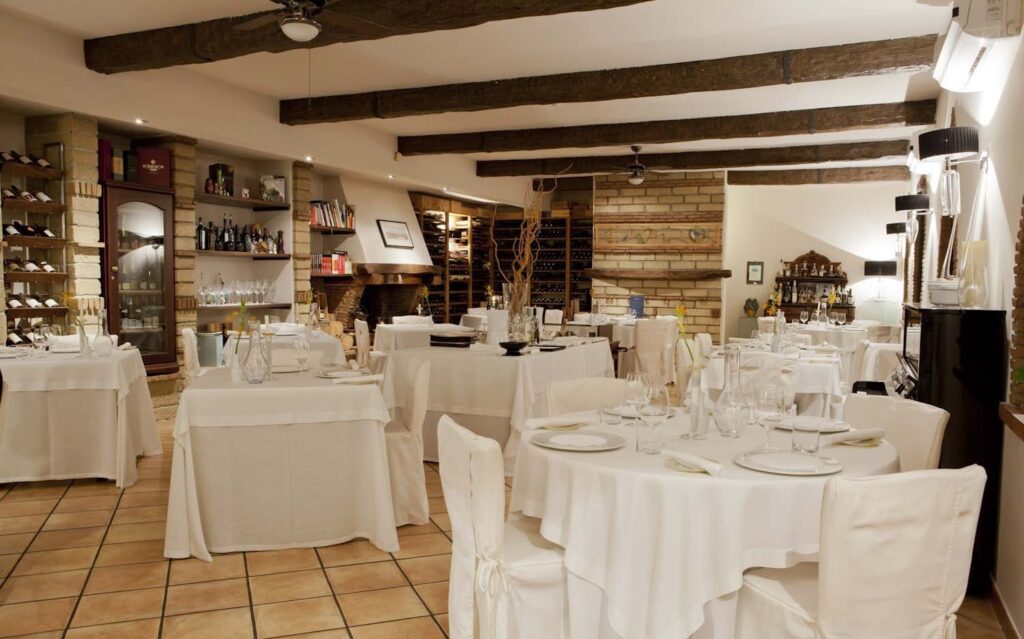
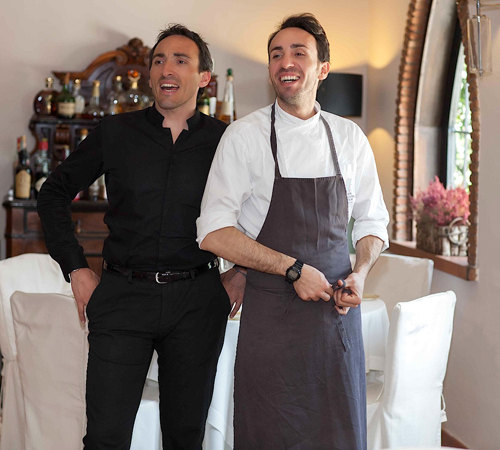
Francesco Sposito: “There’s no precise moment when cooking enters your life; it just happens, and that’s what happened to me. Maybe it was seeing my father, perhaps the magic of creating something new, but by the age of sixteen, I had a clear path to follow.
After completing my classical studies, I chose to delve deeper into this world and embark on my first experiments with a desire to grow and a need to learn, working in the kitchens of some of the greatest Italian and French chefs”.
The message conveyed by the Sposito Family is eloquent: “Walls of jasmine and an enchanting aromatic garden welcome you to our abode. Let yourself be embraced and enveloped by an evocative atmosphere, explore new horizons of taste.
Senses, culture, the unconscious: emotions arise from the dishes and go straight to the heart”.
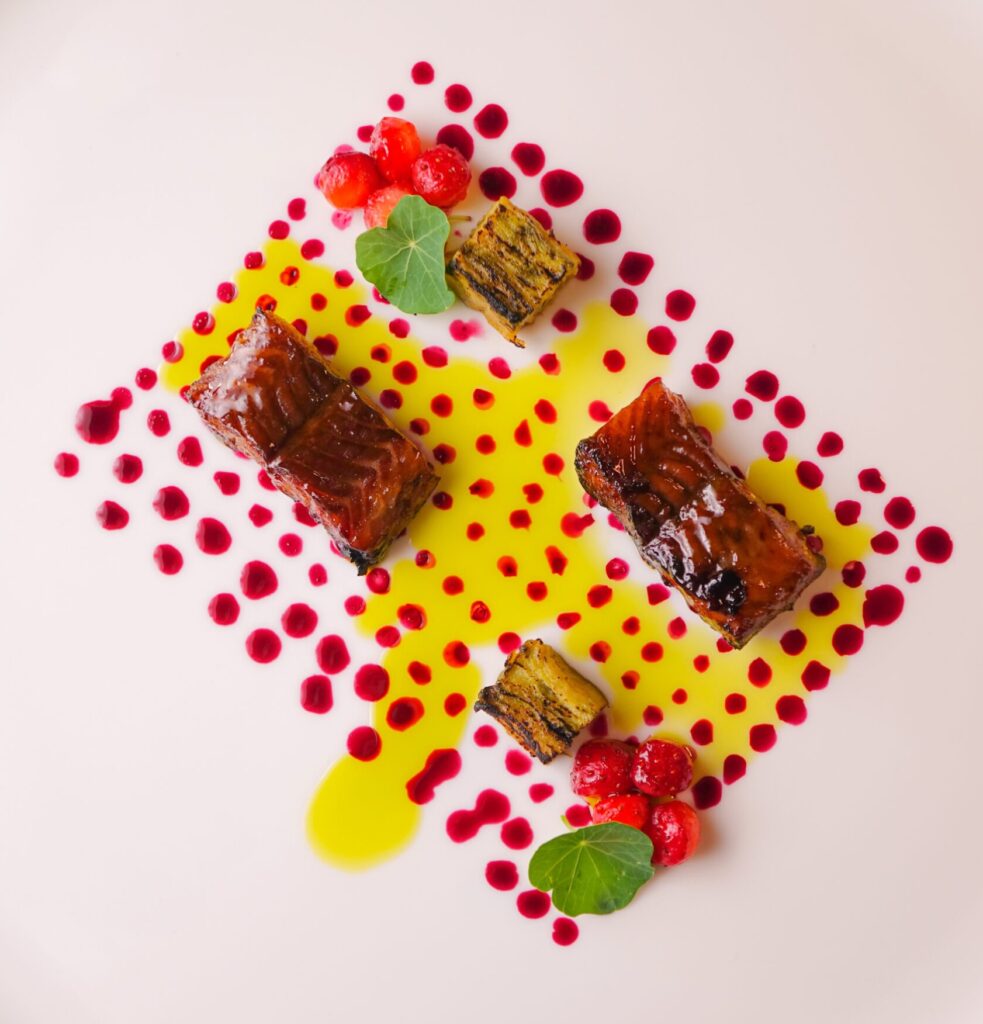
QUATTRO PASSI 2 STARS
Nerano – Napoli
A beautiful, panoramic location steeped in art, with the option to stay in a modern and colorful luxury relais.
On the plate, you’ll find an authentic menu, with vegetables mostly sourced from the family’s garden and fish that (of course) comes fresh from local fishermen.
A special mention goes to the captivating cellar, a labyrinth of volcanic stone tunnels that houses over 1500 labels.
This has been signed first by the chef patron Antonio Mellino and then by Fabrizio Mellino, who has grown up by those stoves and in front of this sea, and it shows.

Lo chef Antonio Mellino: “My passion for cooking was transmitted by Mamma Flora, a sweet woman that cooked for noble families who were vacationing in the Sorrento Peninsula”.
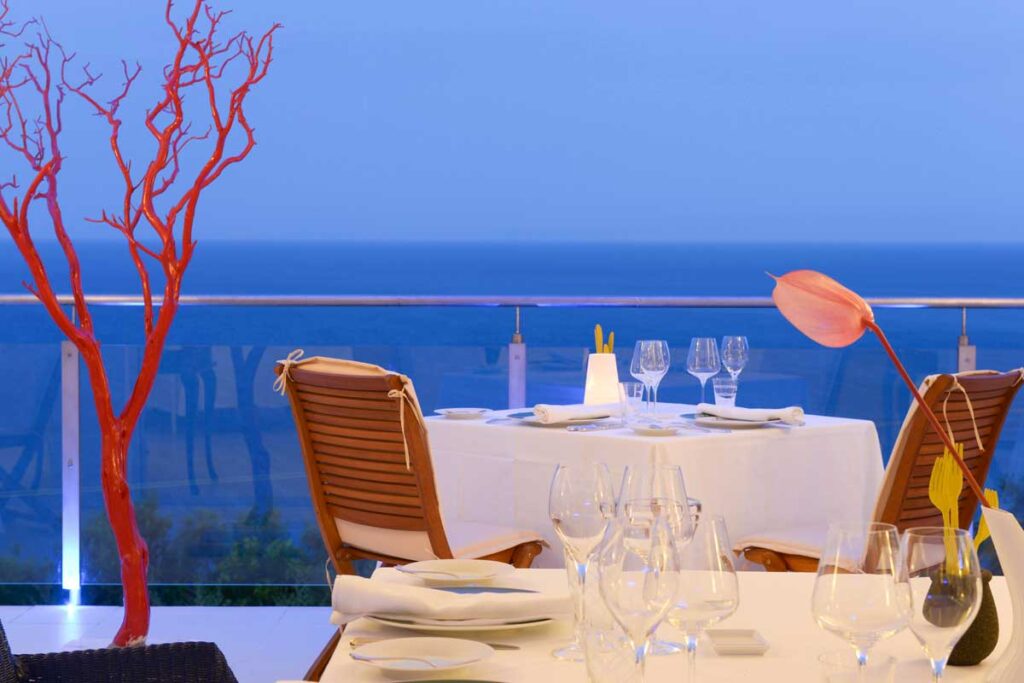
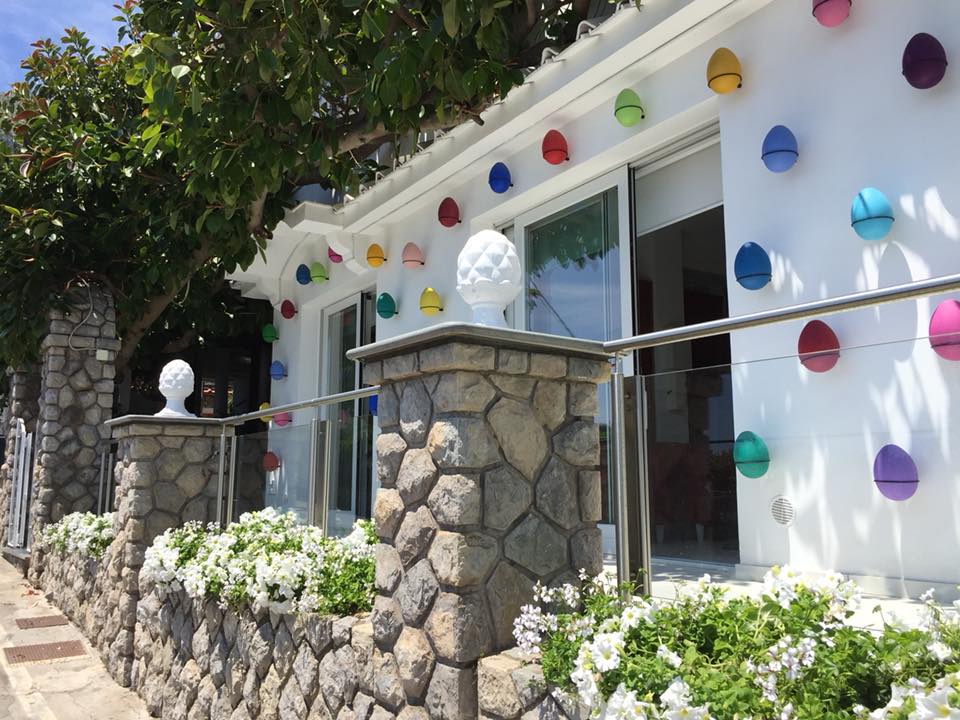
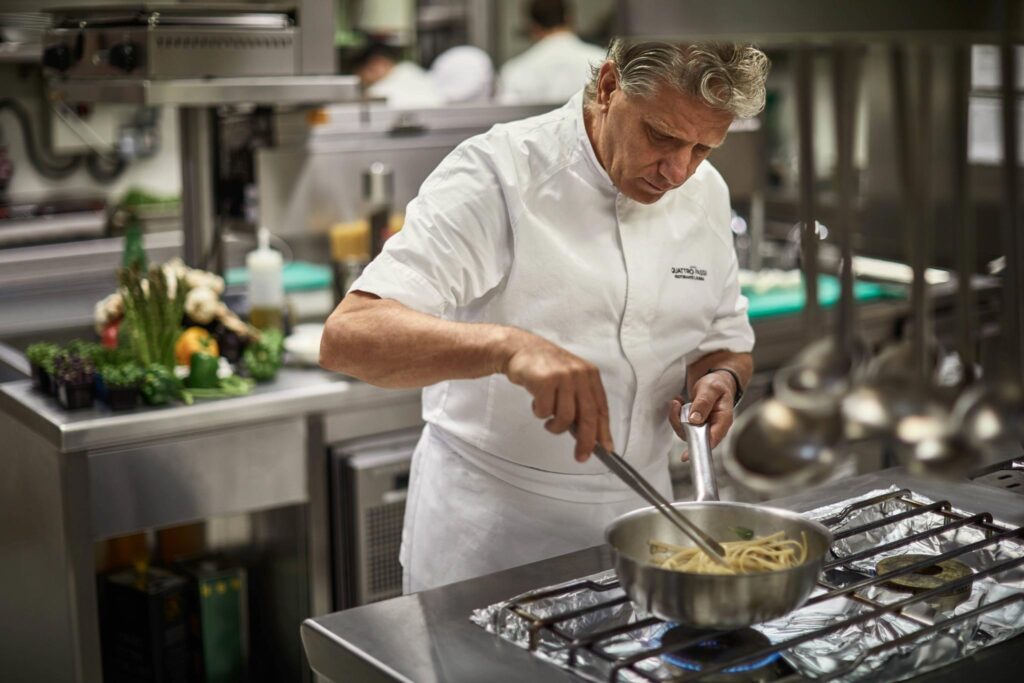
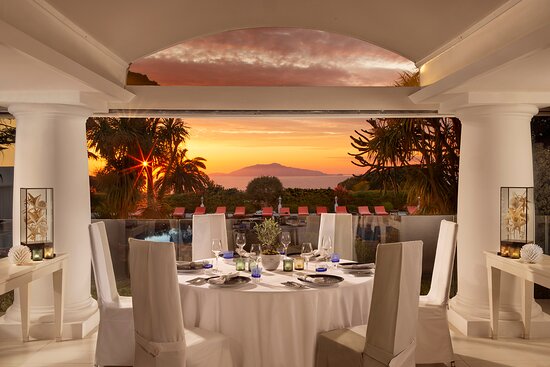
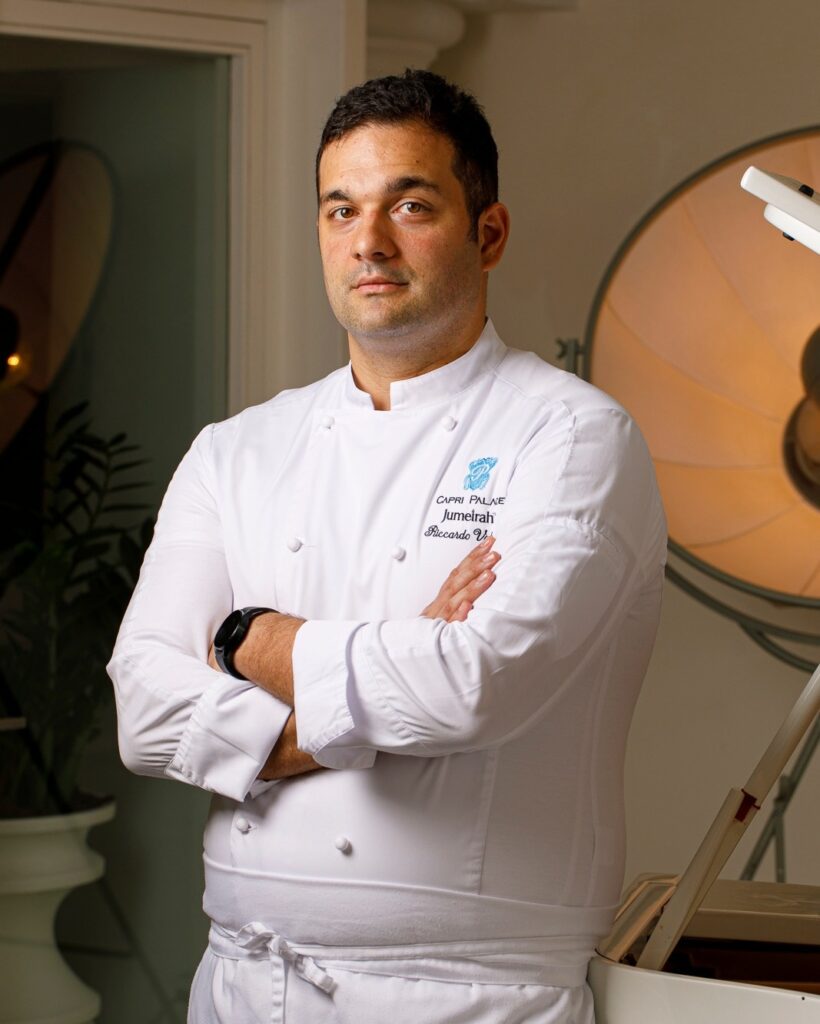
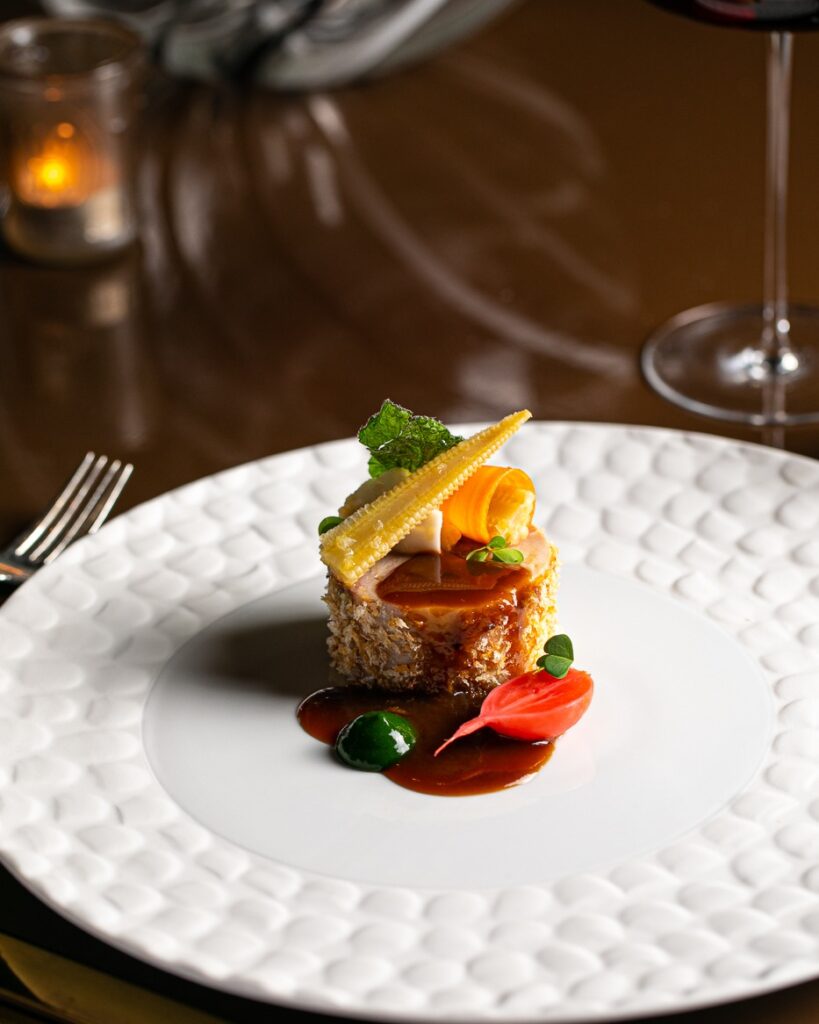
L’OLIVO 2 STARS
Anacapri – Napoli
Everything at the beautiful Capri Palace Jumeirah Hotel, nestled at the foot of Mount Solaro, is designed to celebrate the sea, its scents, and its colors.
The Olivo restaurant, led by Executive Chef Andrea Migliaccio, who grew up on the island of Ischia in the Gulf of Naples, is no exception.
It’s no coincidence, then, that, together with Executive Chef Salvatore Elefante, L’Olivo interprets Neapolitan flavors so well, sometimes winking at an international audience and offering the classic tastes that tourists seek in this region: Tagliolini with red shrimp and burrata, sea asparagus, and oyster leaf, Candele pasta with veal Genovese, Spaghettoni with clams. There are also the finest seafood offerings, from blue lobster to tuna belly, and a menu dedicated to vegetarian clientele.
We are in the highest part of the island of Capri, in a place of total tranquility and relaxation, where you dine surrounded by the works of internationally renowned artists.
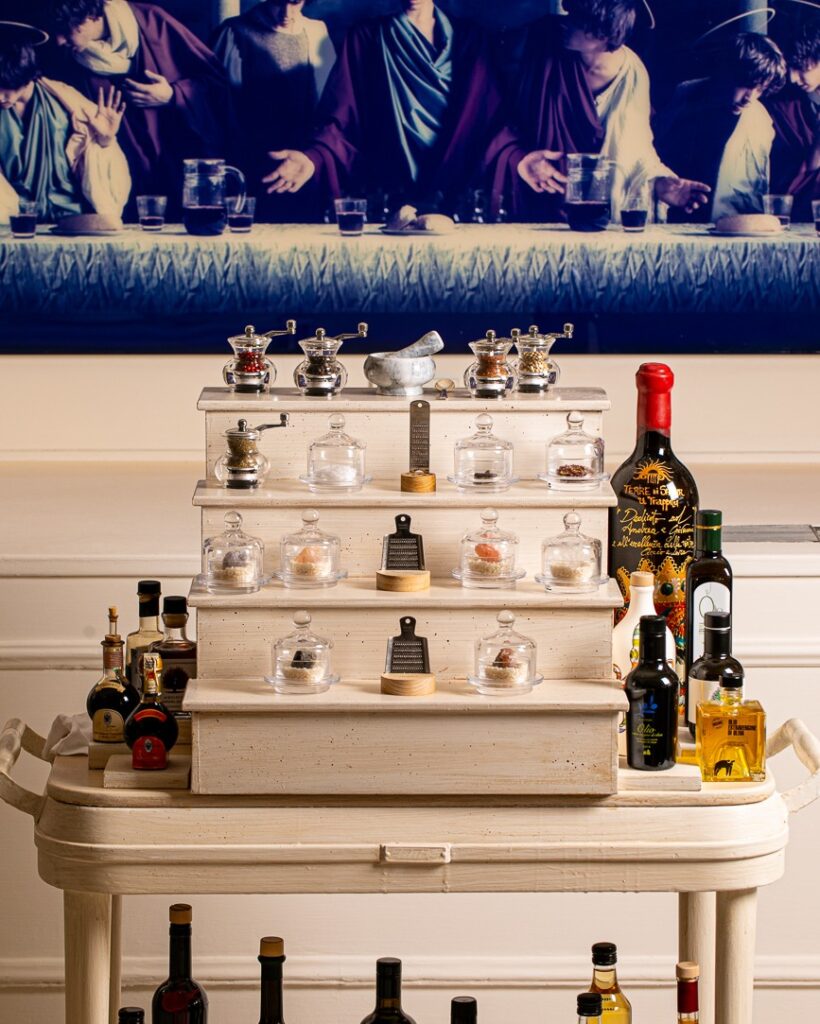
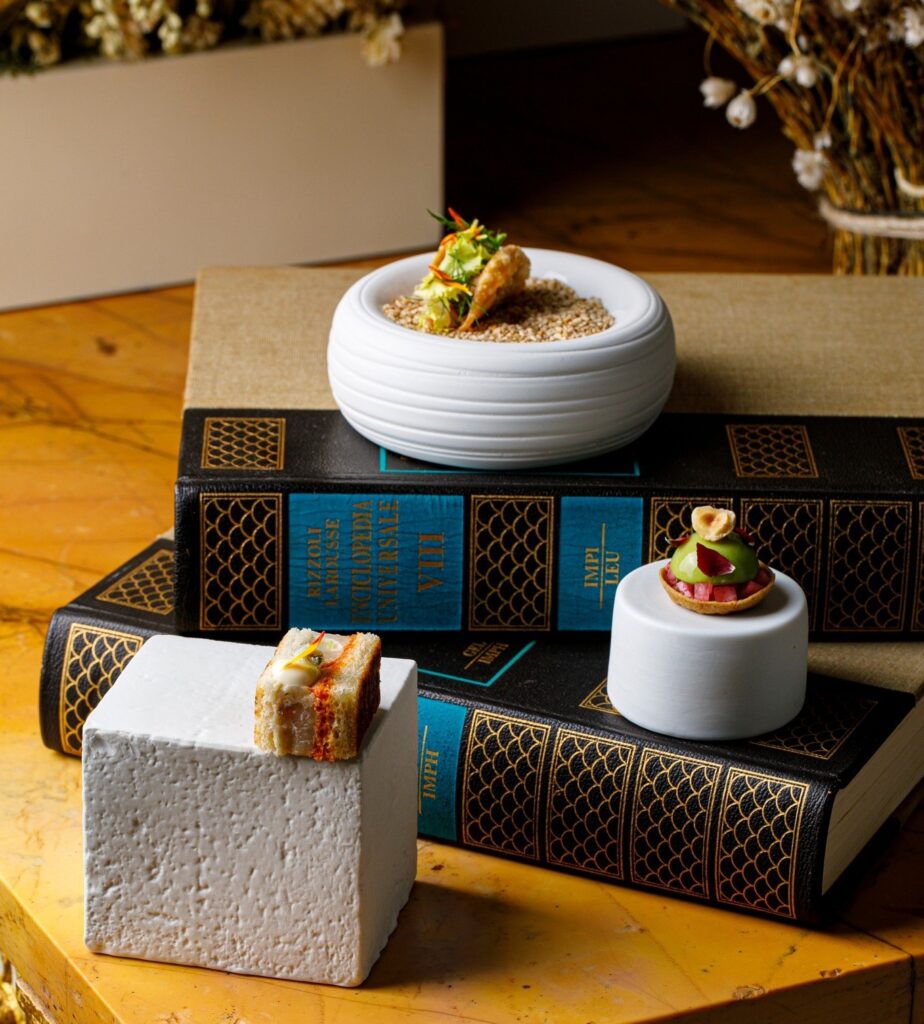
Andrea Migliaccio has excellent inspiration for recipes, restaurant ambiance, kitchen organization, and talent management.
And, in 2021, he embarked on a new milestone in his career, bringing his valuable experience, expertise, and culinary principles as the Executive Chef at the Burj Al Arab, while simultaneously overseeing the entire culinary offering at Capri Palace Jumeirah.
TORRE DEL SARACINO 2 STARS
Vico Equense – Napoli
A sensory journey that guides you into a world of flavors and scents waiting to be discovered. A place where passion and creativity blend together to create masterpieces. The senses are stimulated by sight, taste, and smell, and the palate is enveloped by flavors and aromas that harmonize. Between land and sea, tradition and innovation, it’s a tribute to Campania and the seasonality of its products.
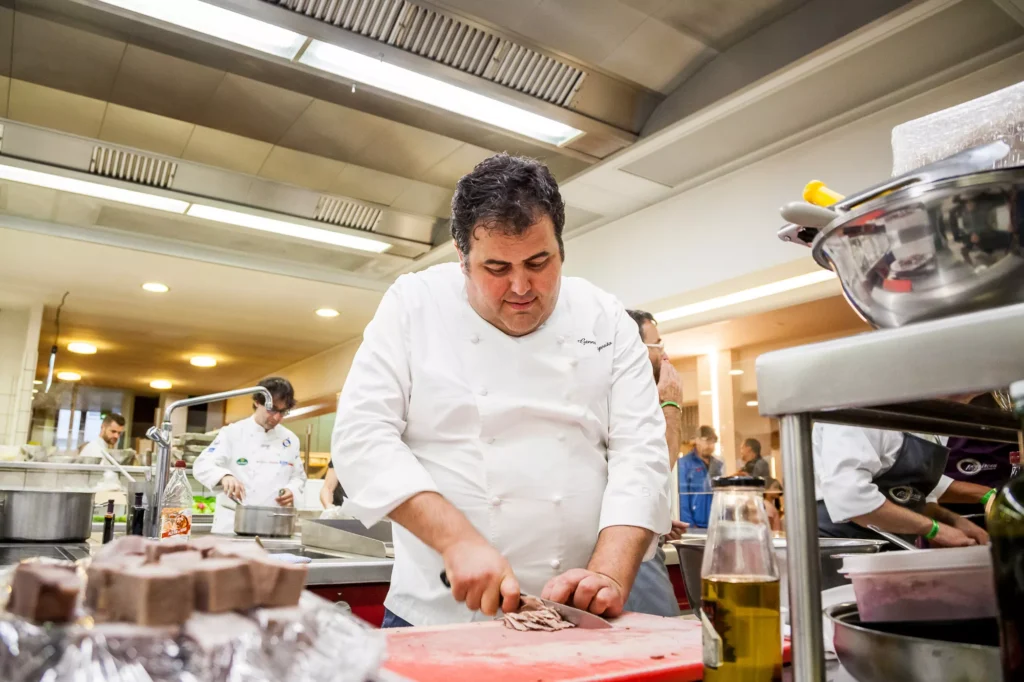
Chef Gennaro Esposito says, “When you taste in one of my dishes the flesh of a sea urchin, the ricotta from a fuscella, mixed pasta, the leaf of a zucchini, the pod of a pea, a small rock fish, lemon, provola cheese, and even rice or an oyster, which do not belong to this territory, you will be eating my history but also my personal quest for the new.”
Gennaro Esposito’s real challenge in cooking is to conceal complexity behind a façade of simplicity: those who eat one of his dishes should understand what is in front of them, discovering flavors that must be simple, distinct, harmonious, without “artifices.”
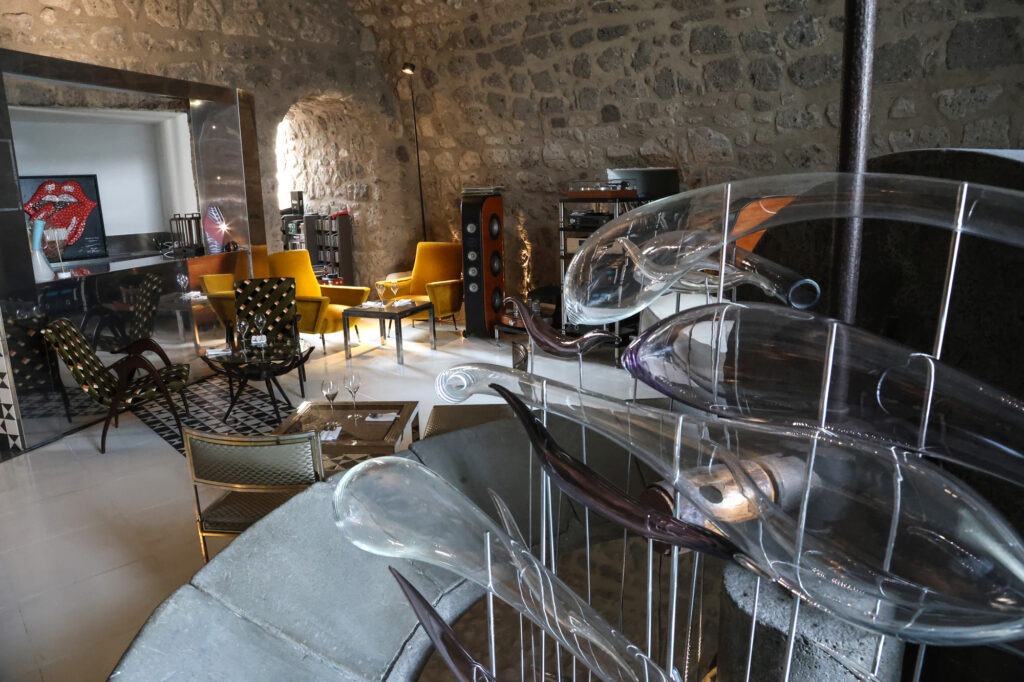
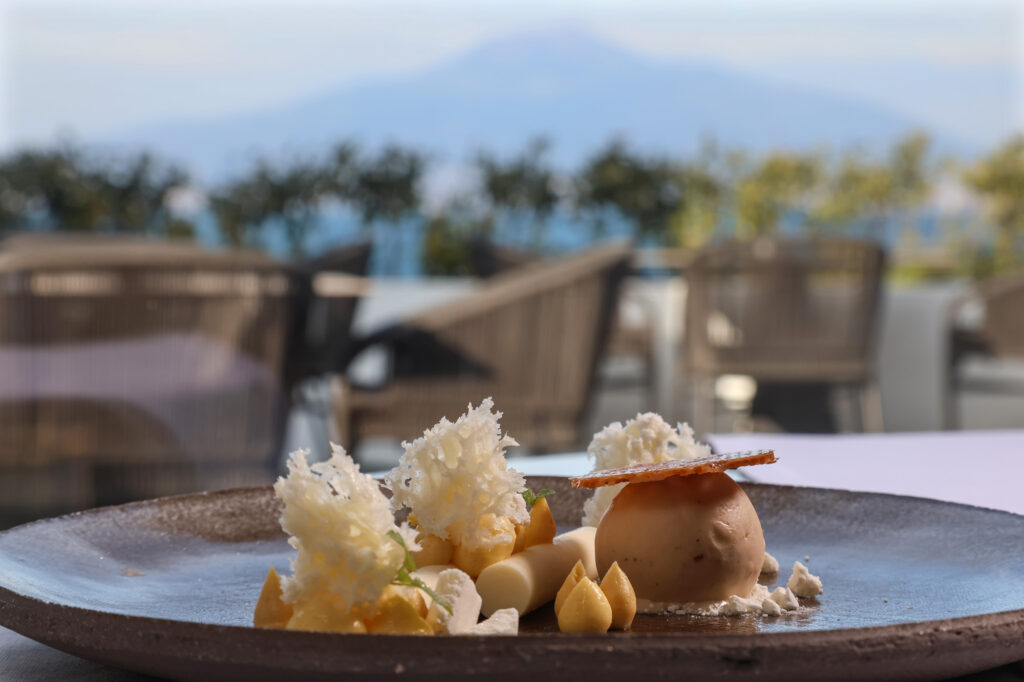
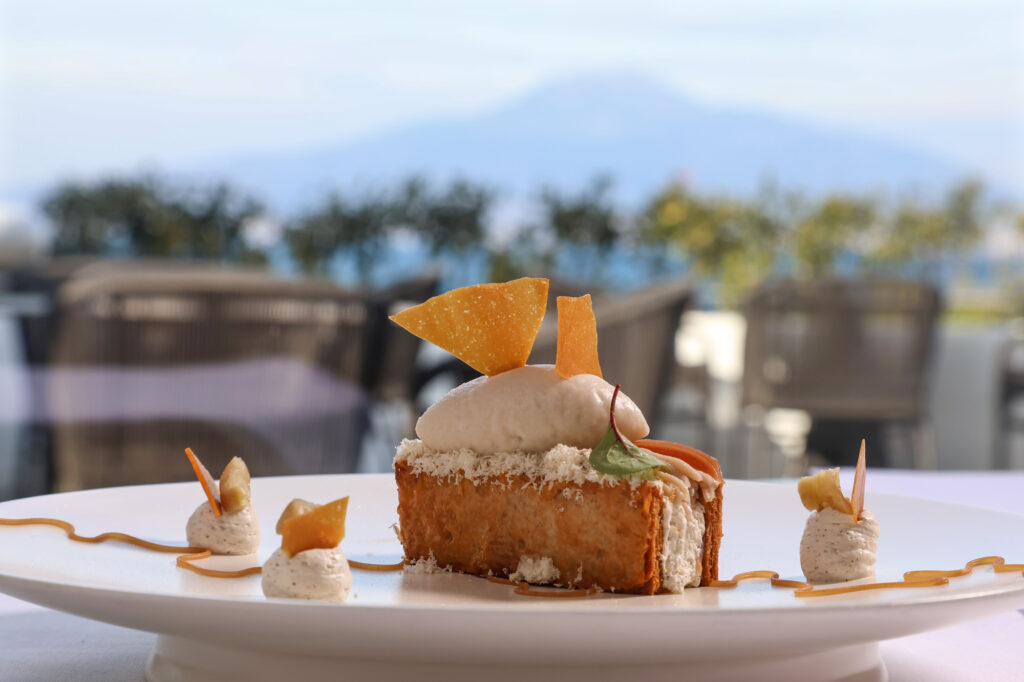
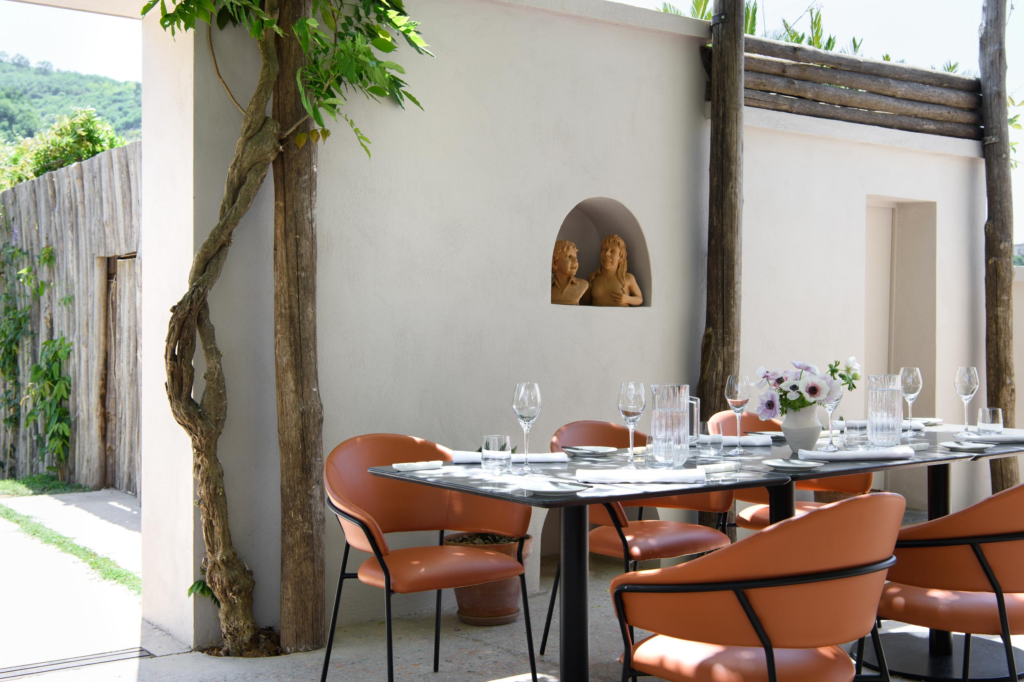
CANNAVACCIUOLO LAQUA COUNTRYSIDE 1 STAR
Ticciano – Napoli
The Cannavacciuolo Laqua Countryside is a resort that tells the story of the chef’s deep love for his Campania.
Like all the restaurants created by the chef, this one also recounts his journey from North to South, but here, the focus is particularly on his memories, the flavors of his native land, and the cuisine of his origins.
Managing the menu – featuring dishes such as Chickpea Tagliatelle, tuna bottarga, bergamot, and pork popcorn, or Spaghettoni with sea urchin, almonds, and cardamom-infused quinoa – is the consistently excellent Nicola Somma, who comes from the successful Turin bistro signed by the chef.
CARACOL 1 STAR
Bacoli – Napoli
A beautiful terrace perched over the sea, a true gem of the restaurant, and a cuisine with a Mediterranean soul, drawing inspiration from the local region and the water that seems to romantically envelop the restaurant.
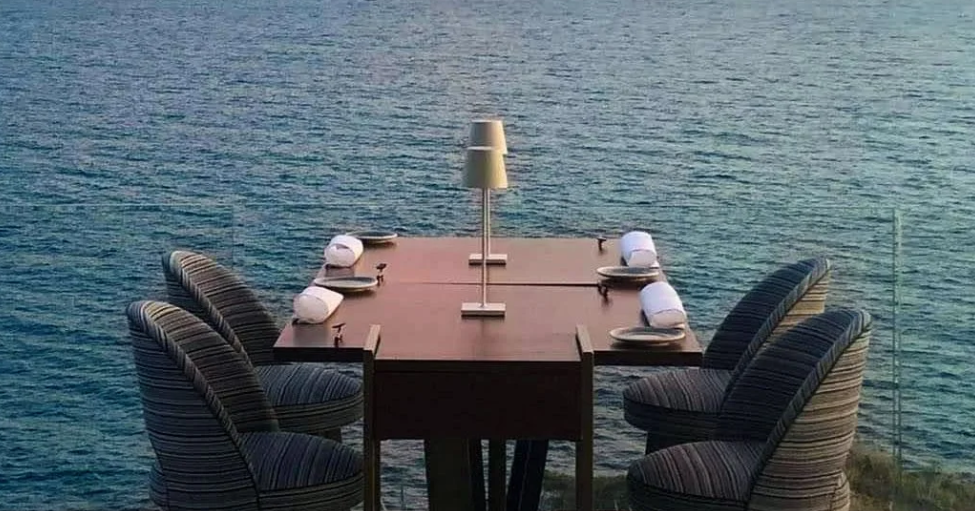
The kitchen is entrusted to the Neapolitan chef Angelo Carannante, who presents dishes inspired by the local area and a celebration of local products.
Premium ingredients, a nod to tradition, and a touch of elegance in every dish. Craftsmanship in preparation and execution is the added value of Caracol.
Like the work of ancient artisans, the crafting of each dish is indeed the result of deep knowledge of the raw ingredients and attention to detail. A unique creation, a fine dining experience that satisfies all the senses.
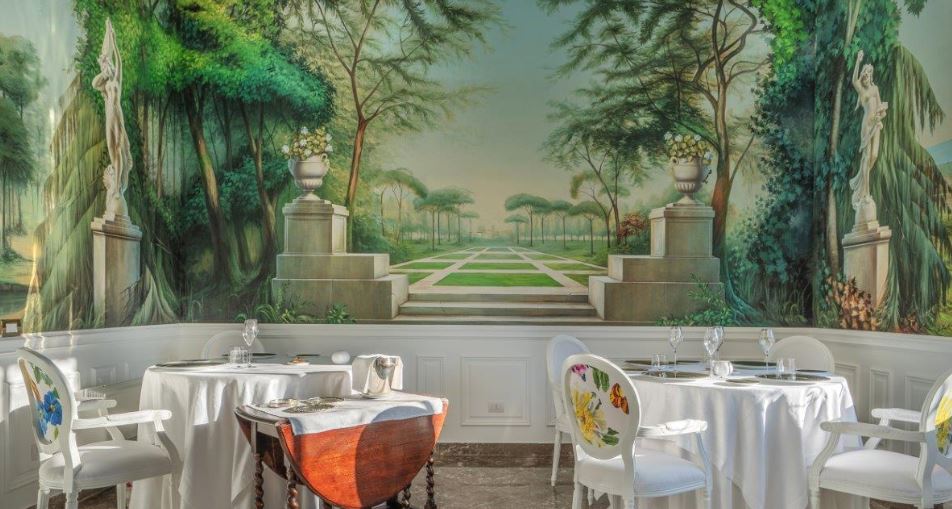
DON GEPPI 1 STAR
Sorrento – Napoli
Classic elegance surrounds the restaurant of the Hotel Majestic Palace, with its dining room adorned by a canvas painted by the Academy of Fine Arts in Naples, spanning over 80 square meters.
The restaurant of this four-star hotel, just steps away from the beaches of Sorrento, is led by Chef Mario Affinita, who offers a cuisine rich in Campanian and Mediterranean flavors, featuring dishes like Neapolitan Risone with lemon, thyme, and Parmesan or Tortelli alla Nerano.
The restaurant also has a lovely garden dehors overlooking the pond and a terrace with a panoramic view of the gulf.
GRAND HOTELS
In the sign of hospitality since 1870. The charm, the sensations, the panorama, the flavors of Naples. All of this, in the elegance and with the five-star service of the Grand Hotel Parker’s.
The precious furnishings, the elegance of marbles and crystals, the spectacular roof garden that offers a unique experience from the early morning breakfast.
Then, the emotions to savor in the largest historic center in Europe, a Unesco heritage site.

The Grand Hotel Parker’s welcomes you to exclusive rooms where elegance, tradition, and all the typical charm of an ancient Neapolitan residence are palpable.
Excellent service and breathtaking views make Parker’s the ideal choice. The Neapolitan-style hospitality will make your stay an unforgettable experience.
“I love Pompeii more than Paris,” Herman Melville used to repeat. The charm of such an important city permeates all of Neapolitan culture and beyond. Even the Grand Hotel Parker’s is part of the history of this archaeological gem, and a modern Grand Tour could even start from here.
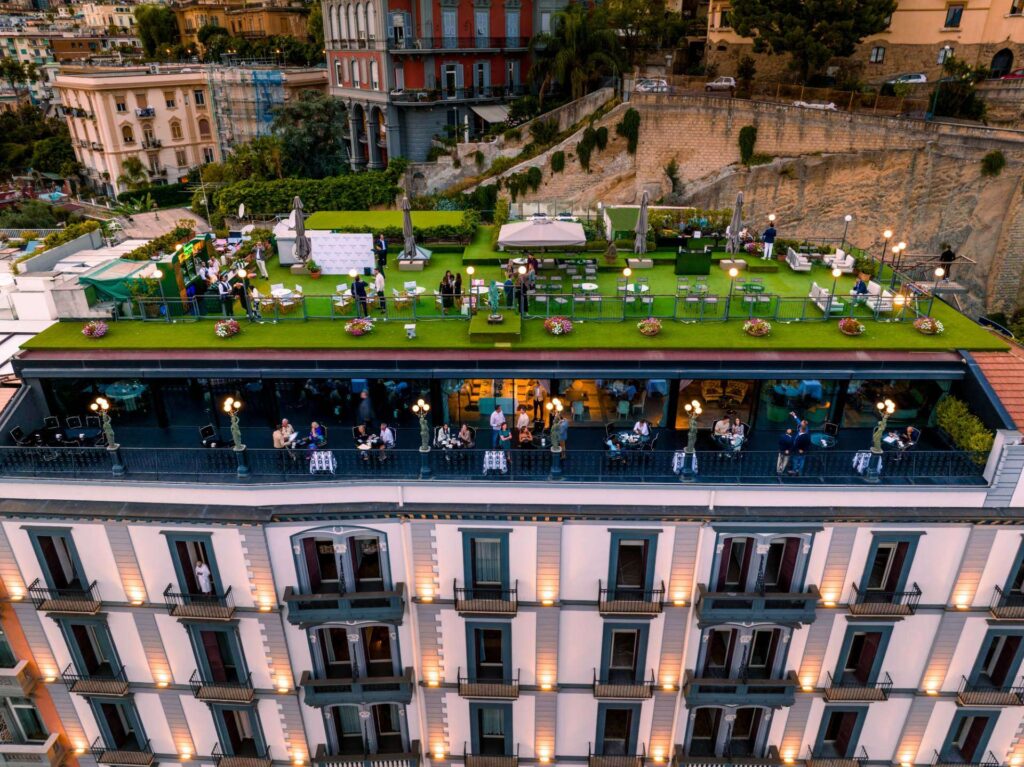
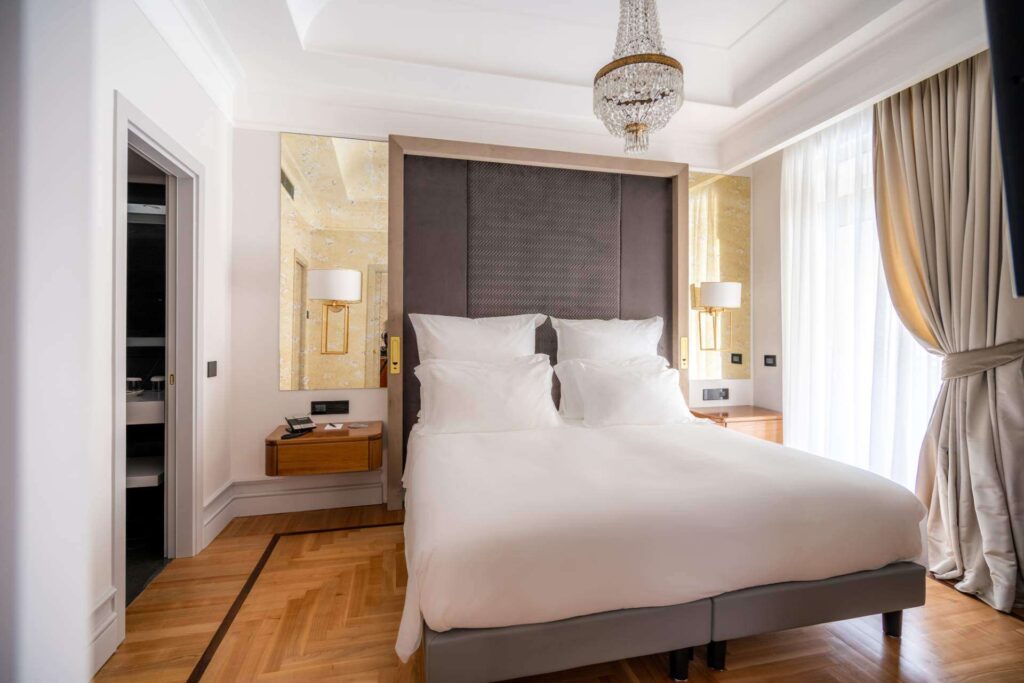
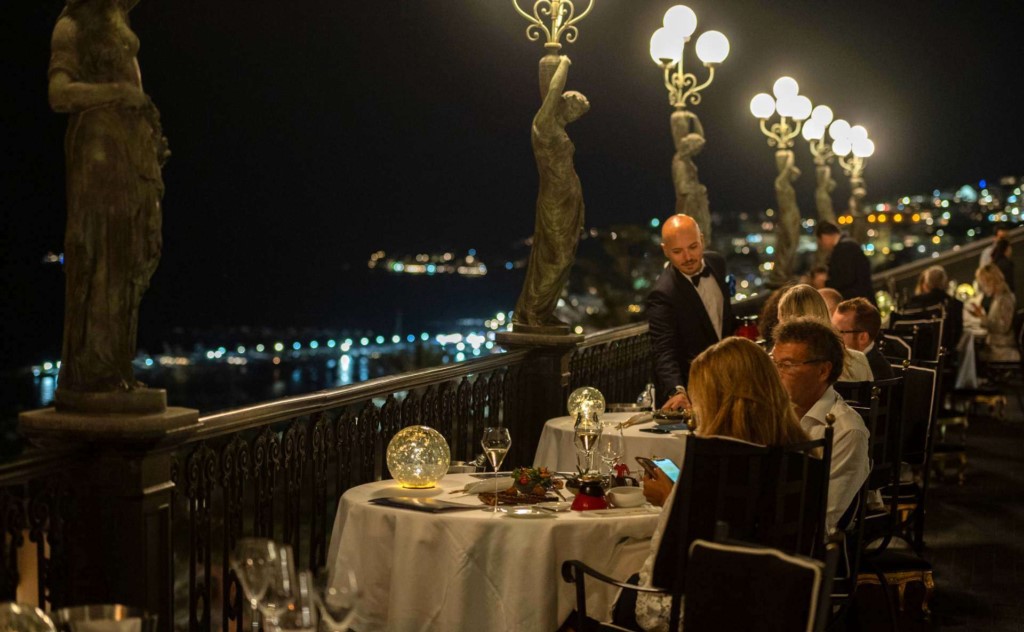
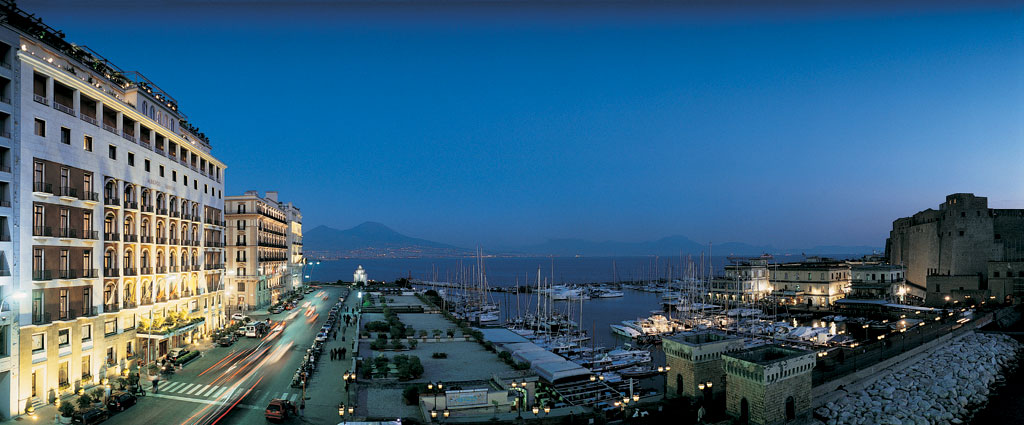
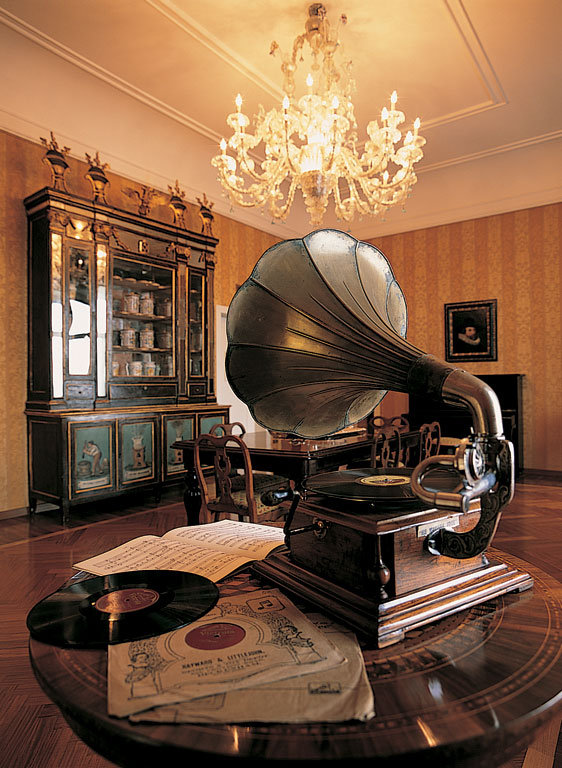
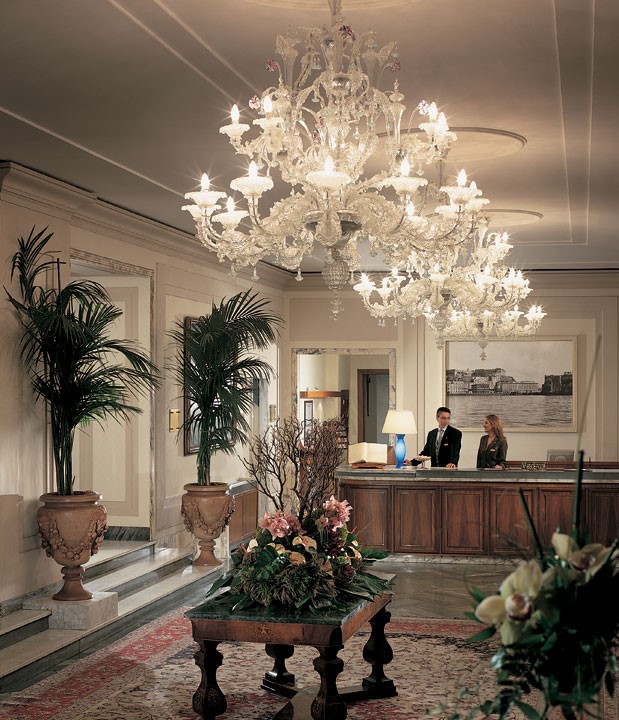
GH VESUVIO
It’s a hotel synonymous with luxury and sophistication, which immediately becomes the destination for international tourists who arrived in Naples at that time.
Two years after its inauguration, the hotel hosted Queen Victoria of Sweden and her personal physician, Axel Munthe, an already established writer. In 1885, Guy de Maupassant was a guest at the hotel.
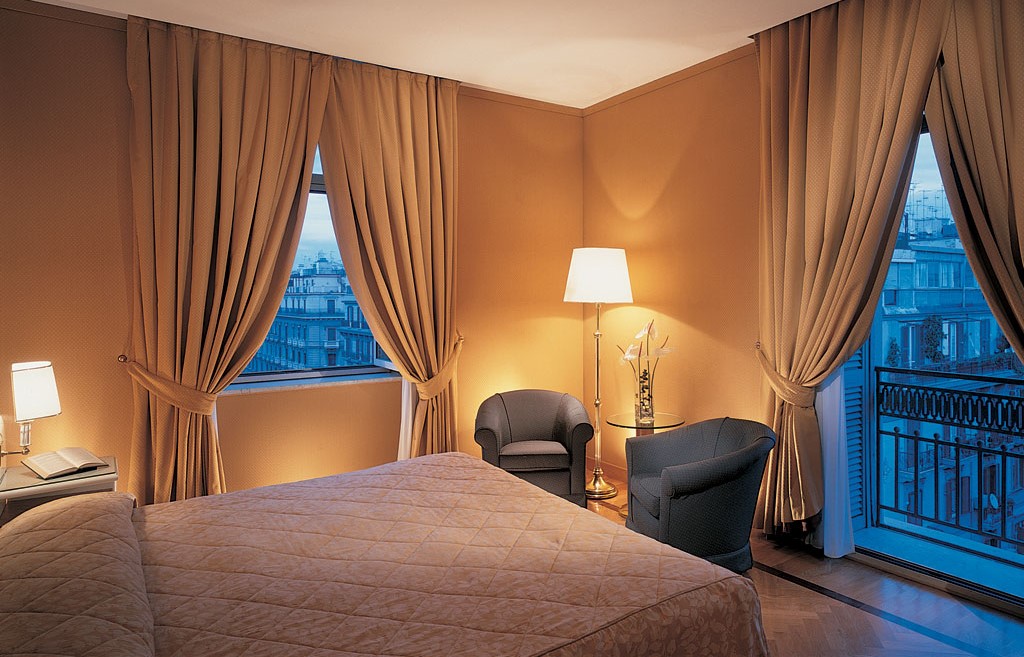
The great French writer vividly described his impression of the city: “The population gesticulates, the way of driving is always rather hectic: this population that makes this city so lively and unique!
Women and girls in pink and green dresses, their chests wrapped in red, blue, or other vibrant-colored shawls, call out to passersby along the pier, offering them all sorts of seafood, drinks, and fruit, waving their arms and faces upwards and extolling the quality of their goods”,
The tradition of hosting illustrious guests at the Vesuvio continues with prominent names such as Oscar Wilde, Gabriele D’Annunzio, and Enrico Caruso, who referred to the Vesuvio as his “Neapolitan home.” The Caruso Roof Garden, on the ninth floor of the hotel, offers a splendid view of the Gulf of Naples.
GH ROMEO
Romeo is a haven of indulgence in design, a place where you’re free to embrace life’s greatest pleasures, cultivate splendid experiences, nourish the body, sip fine wines, and taste the most exquisite flavors.
It’s a relaxing space of meticulously curated comfort and art, where you can read, reflect, or philosophize day and night.
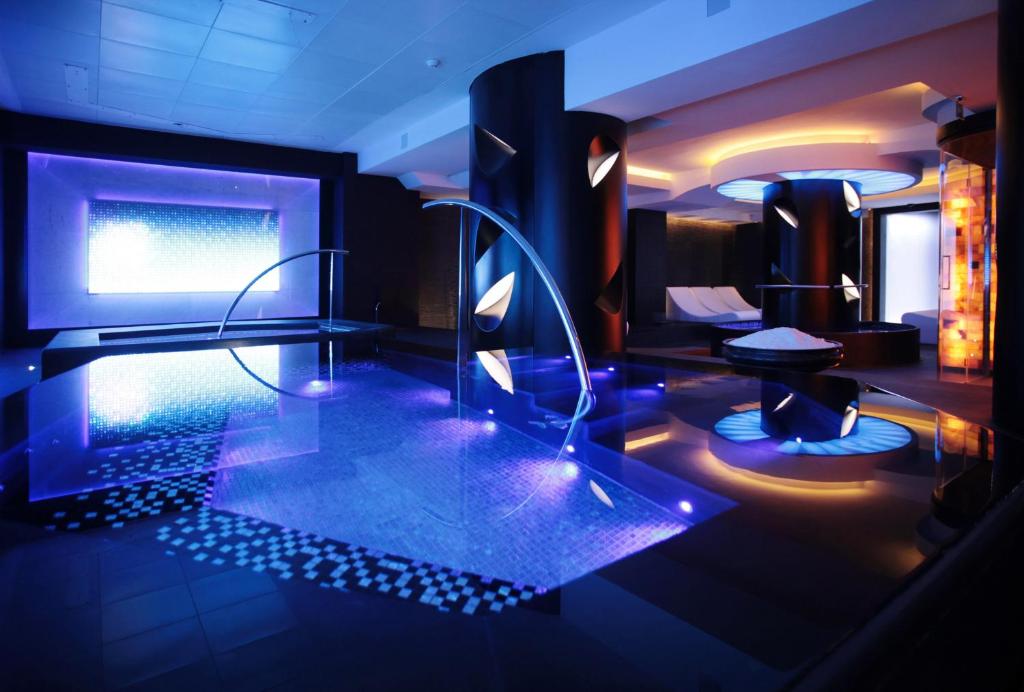
Retreat to the Cigar Room next to Il Bar for a moment of peace or to savor the richness of cigar aromas and fragrances.
Let life continue to play in the Game Lounge with the Millennium billiard table, the alabaster chessboard, the crystal foosball table, and the jukebox from the 1940s.
The Spa Sisley Paris: what was once the Salt Customs House on the harbor is now an oasis of natural therapies and ancient rituals that embrace the therapeutic benefits of salt, the soothing properties of water, and the revitalizing nature of contrasts.
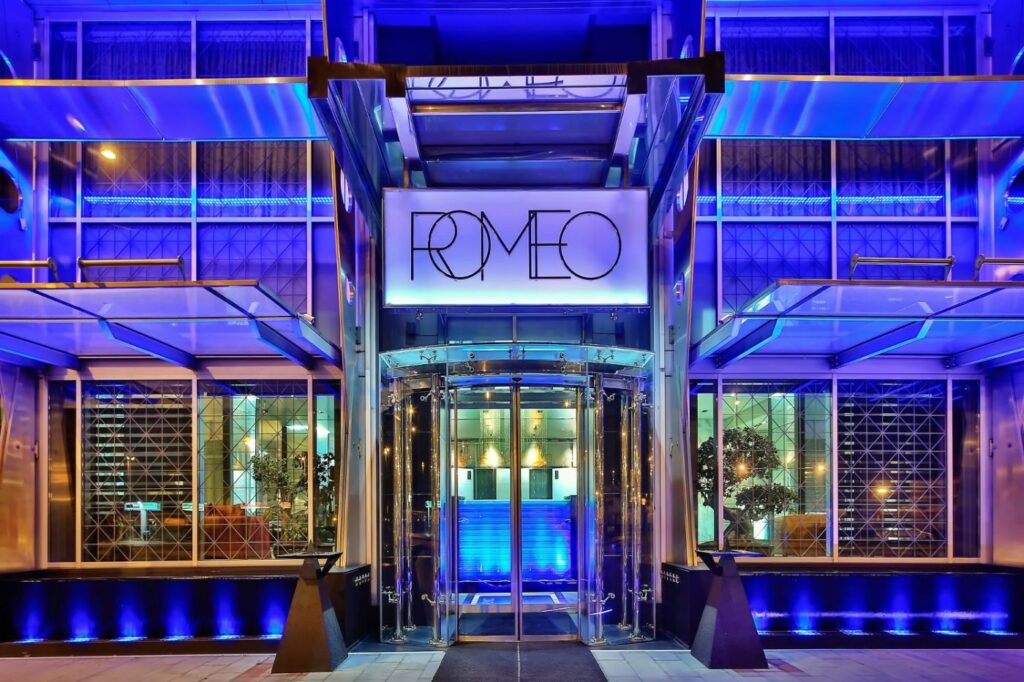
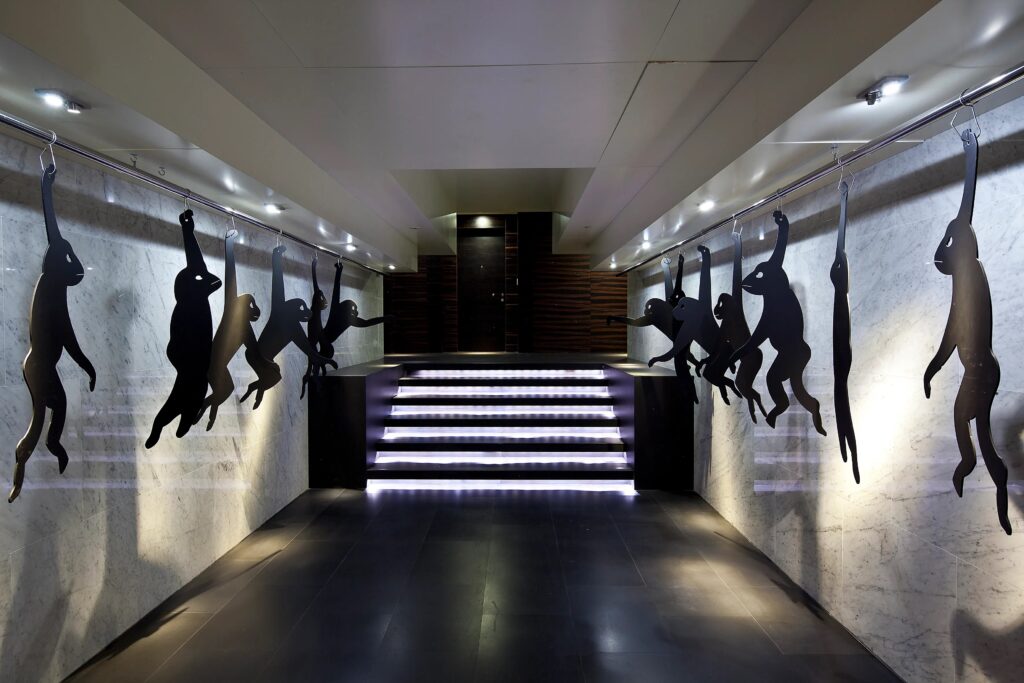
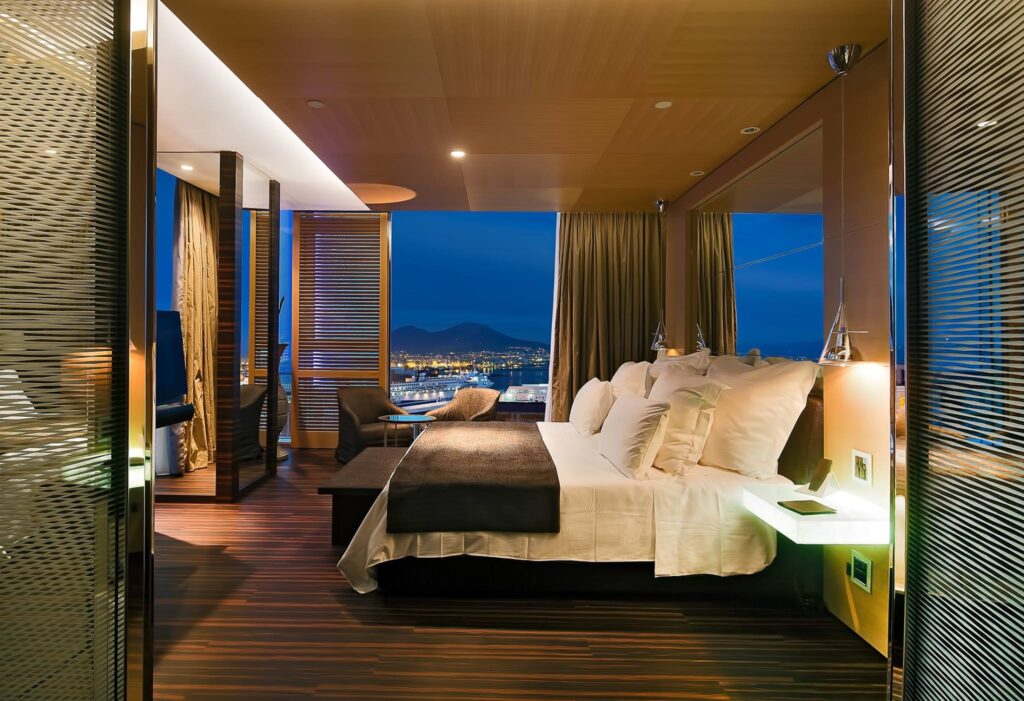
NIGHTLIFE
The nightlife spots in Naples range from the historic center to the Vomero hill, passing through the famous bars in Chiaia and reaching the nearby Pozzuoli.
The Lungomare Caracciolo and Mergellina are also popular, thanks to the evening charm of the promenade overlooking the Gulf. The best neighborhood to discover pubs, bars, and nightclubs is the historic center, specifically Piazza del Gesù and Piazza San Domenico Maggiore.
This area, very close to the universities, offers numerous options for affordable aperitifs and cocktails, making it popular among students and young people.
Piazza Bellini is in the historic center area, but it deserves an exclusive mention because it’s one of the liveliest areas in the city where the true Neapolitan nightlife unfolds.
You’ll find many literary cafes, some run by cultural associations, capable of offering unique and interesting events.
The most well-known is the Caffè Letterario Intra Moenia, which hosts concerts and book presentations.
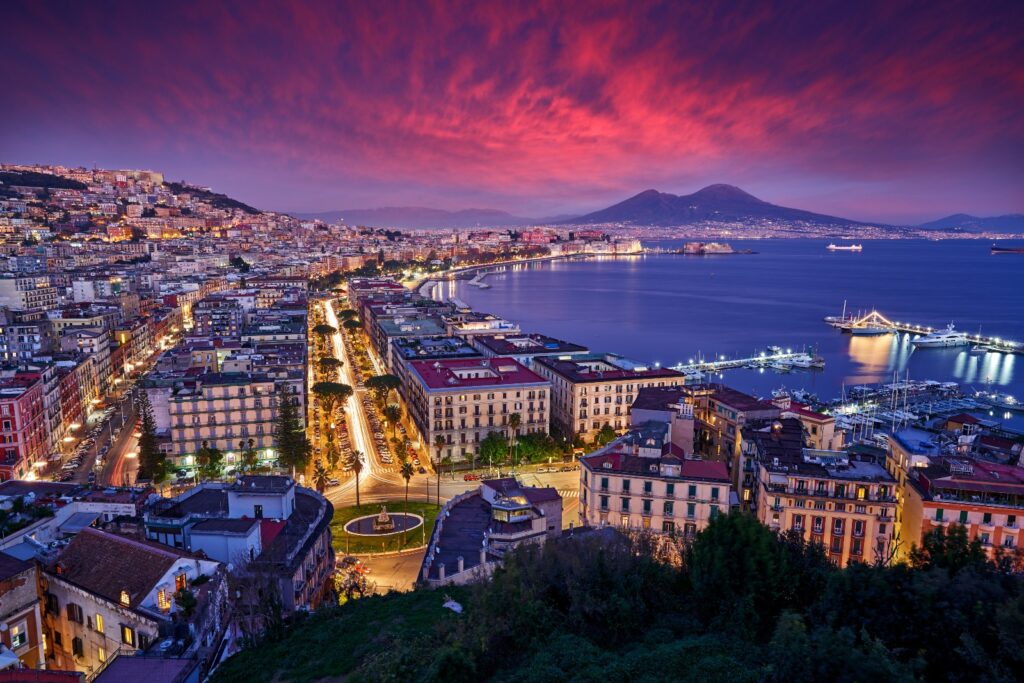
For literature enthusiasts, another point of reference is Il Perditempo, not far away, in front of the Conservatory of San Pietro a Majella.
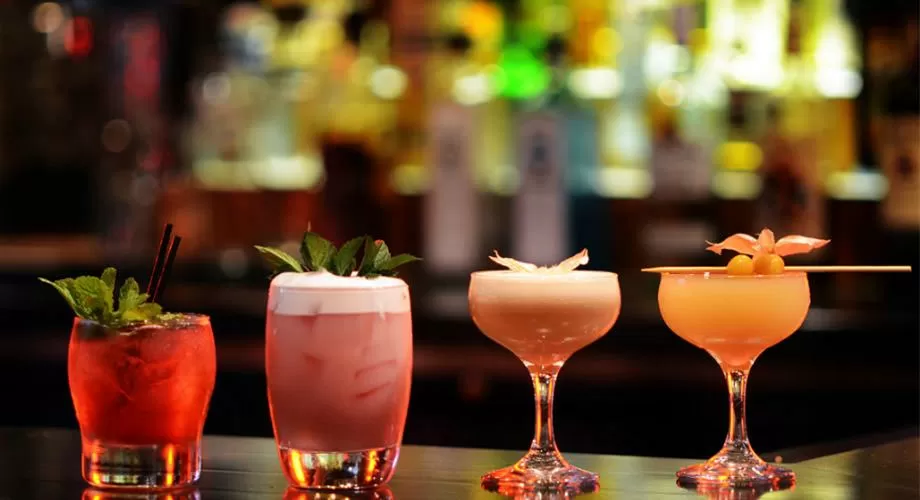
It’s a bookstore that houses a lounge bar and organizes live music events surrounded by books.
Chiaia is another one of the trendiest neighborhoods. The most well-known places are Enoteca Belledonne (located at Vico Belledonne, 18) and Chandelier (at Vico Belledonne, 34), cozy spots suitable for post-dinner cocktails.
Meanwhile, Vomero is famous for its pubs, and among them, Fonoteca stands out. It’s located at Via Raffaele Morghen, 31 c/f, and it’s a record store with a lounge music bar.
Il Lanificio 25, located at Porta Capuana, is a rare example of industrial archaeology in Naples because in the 18th century it was a wool factory, while today it is an active artistic and cultural center where concerts and themed evenings are organized.
Hbtoo, in Via Coroglio, is one of the trendiest venues in Naples that combines a nightclub, restaurant, and sushi bar into a modern and trendy concept. The establishment is very elegant, with refined design, and offers international cuisine, cultural events, art, and musical evenings together.
Informations concierge@sinelitegroup.com
Reservations booking@sinelitegroup.com


